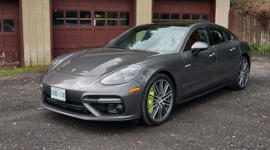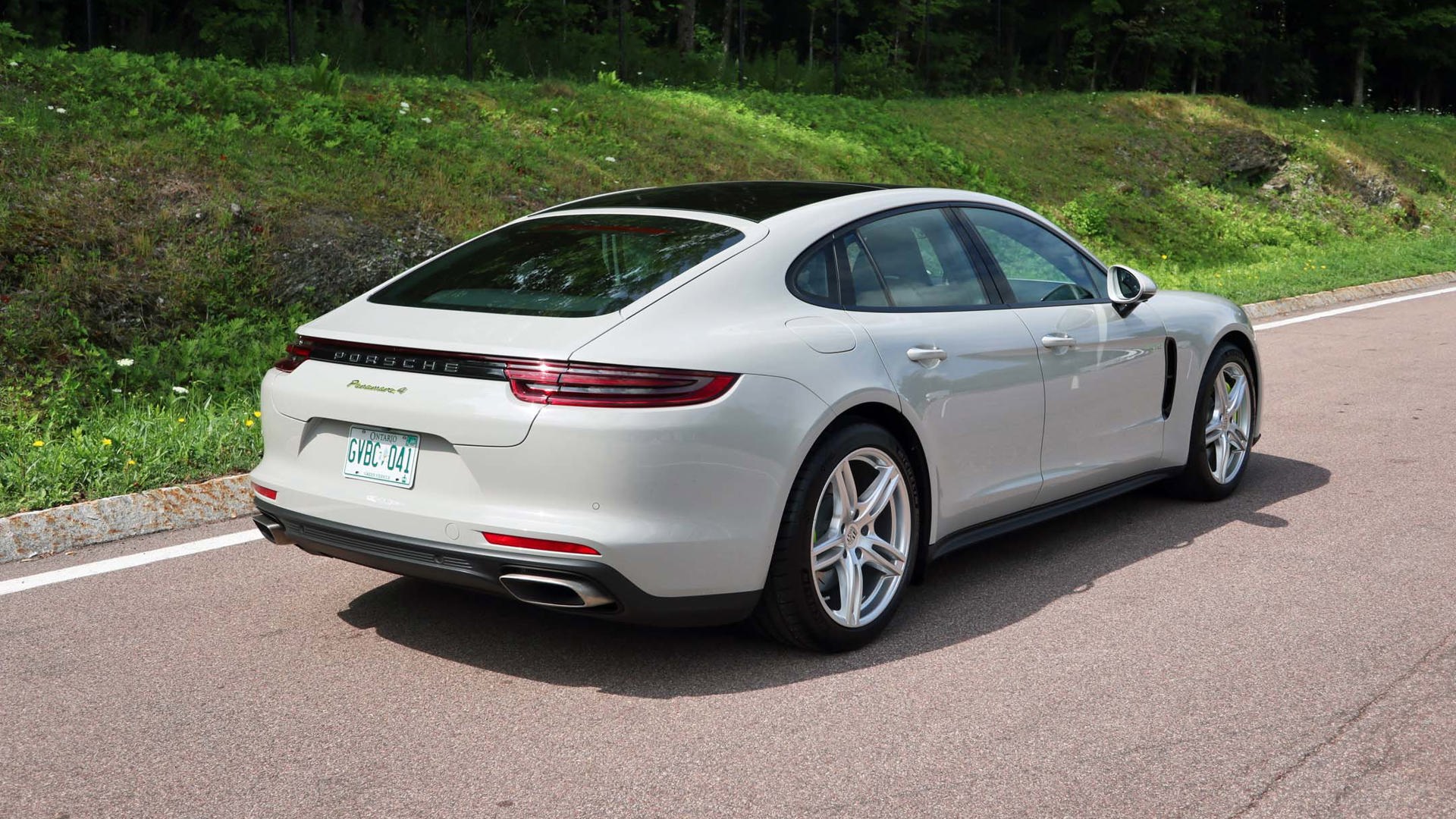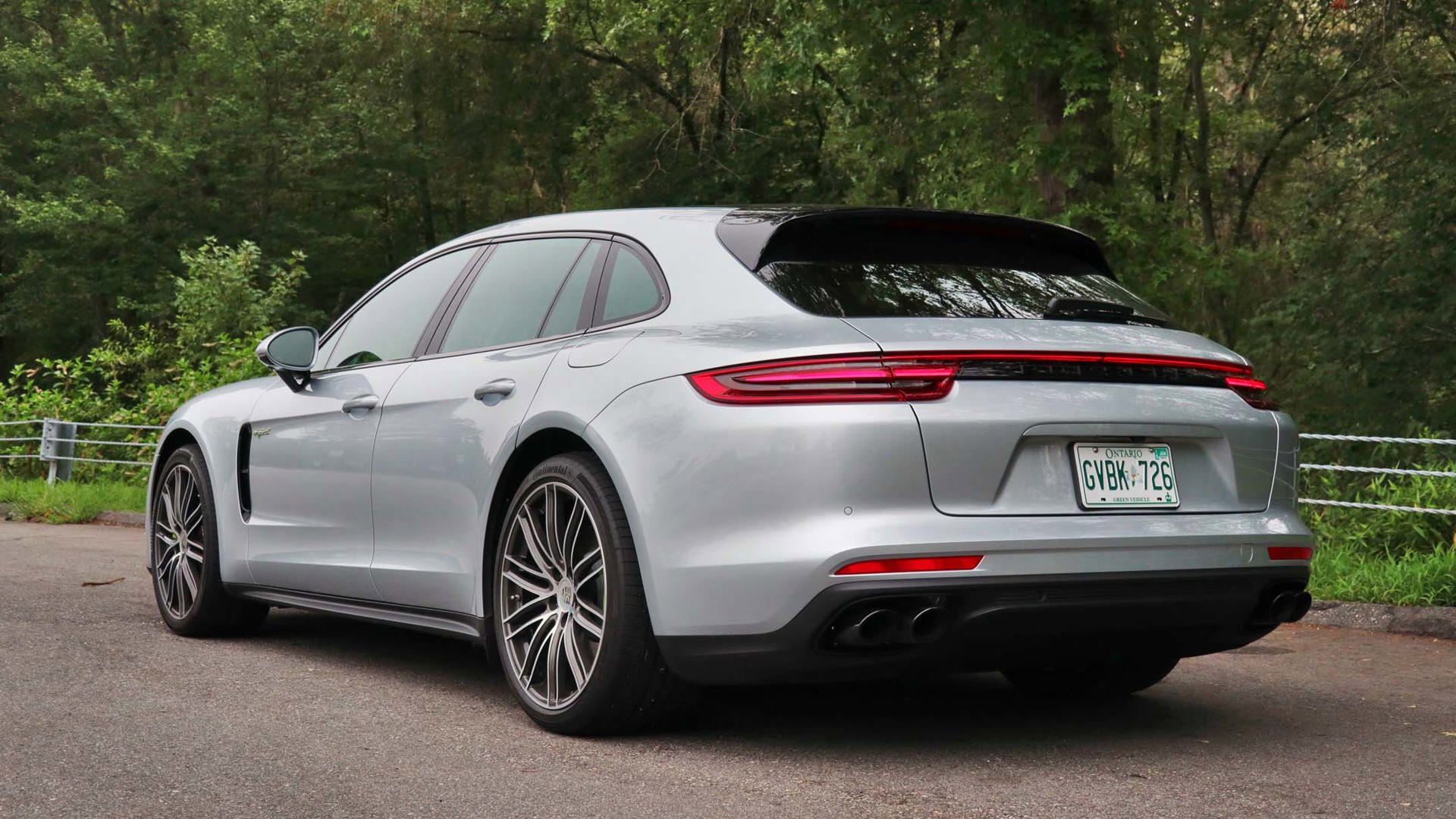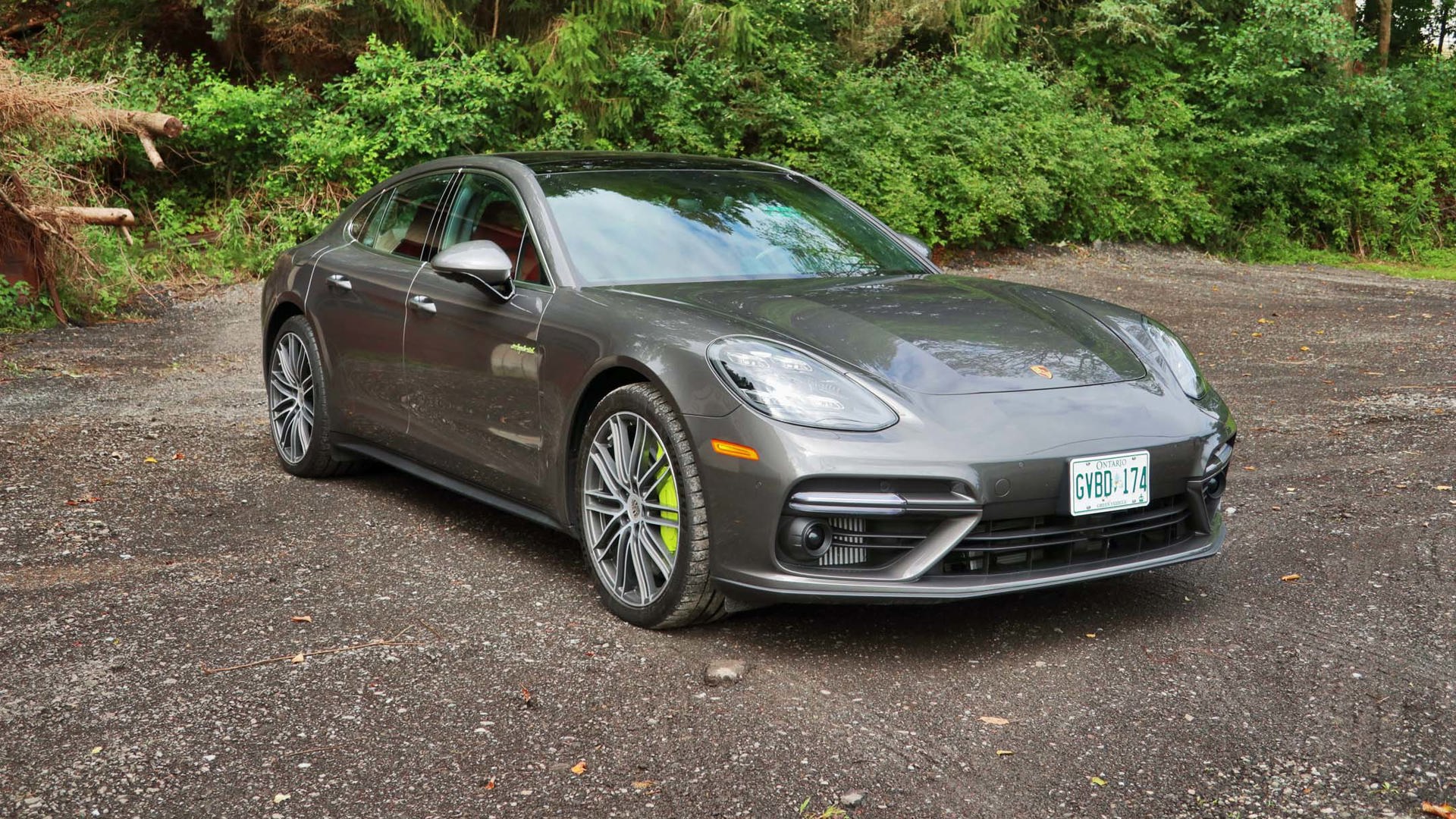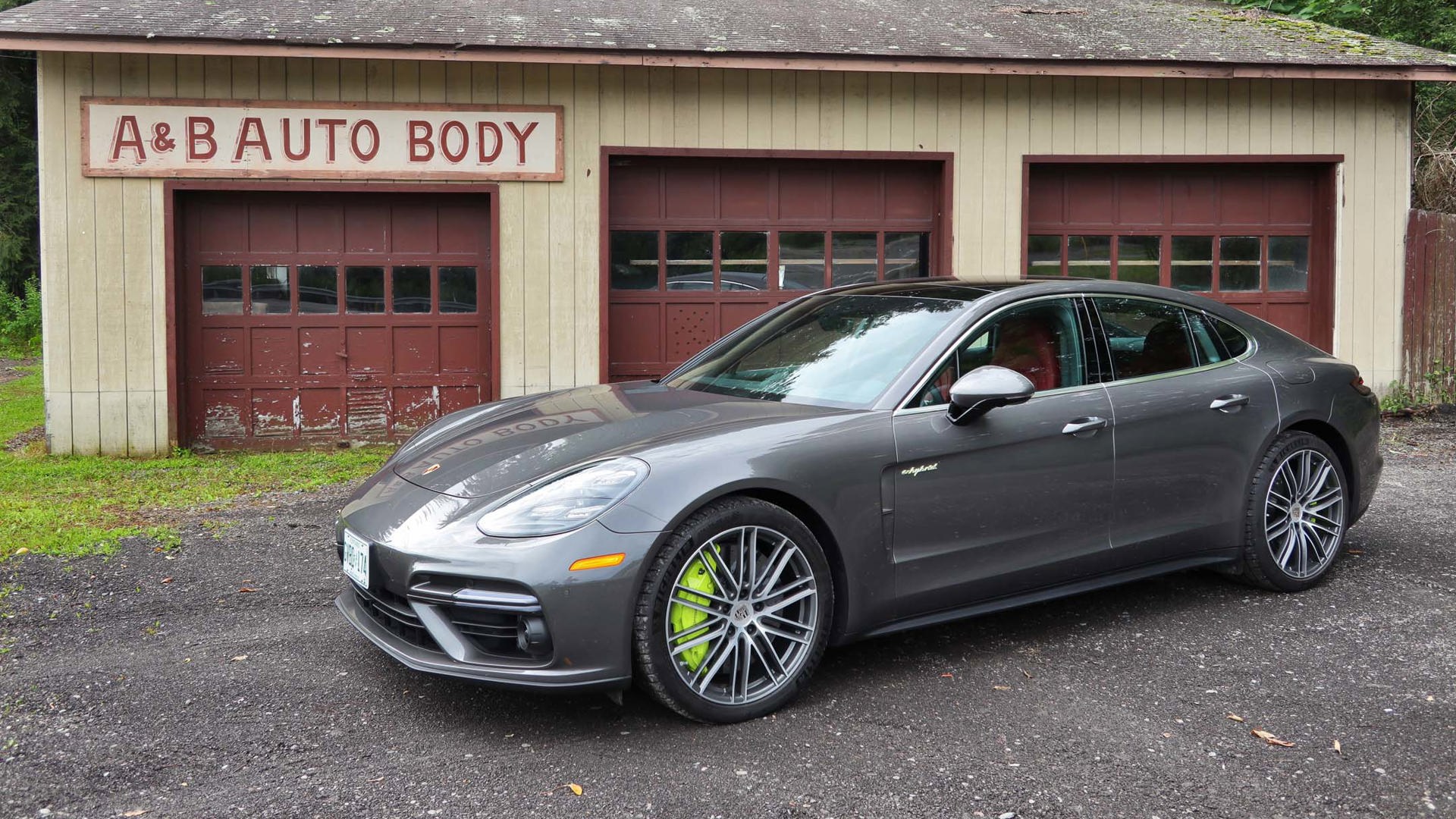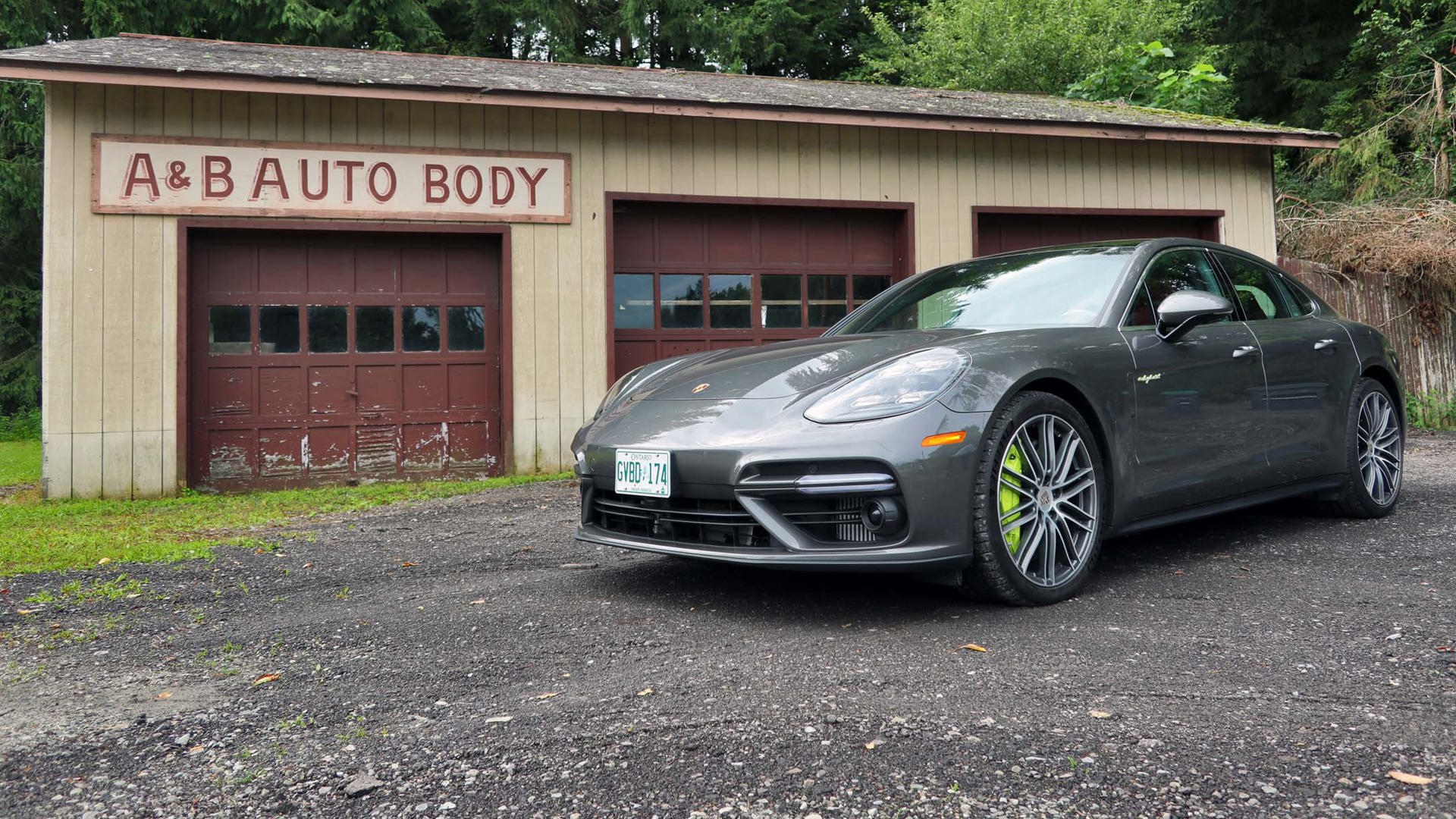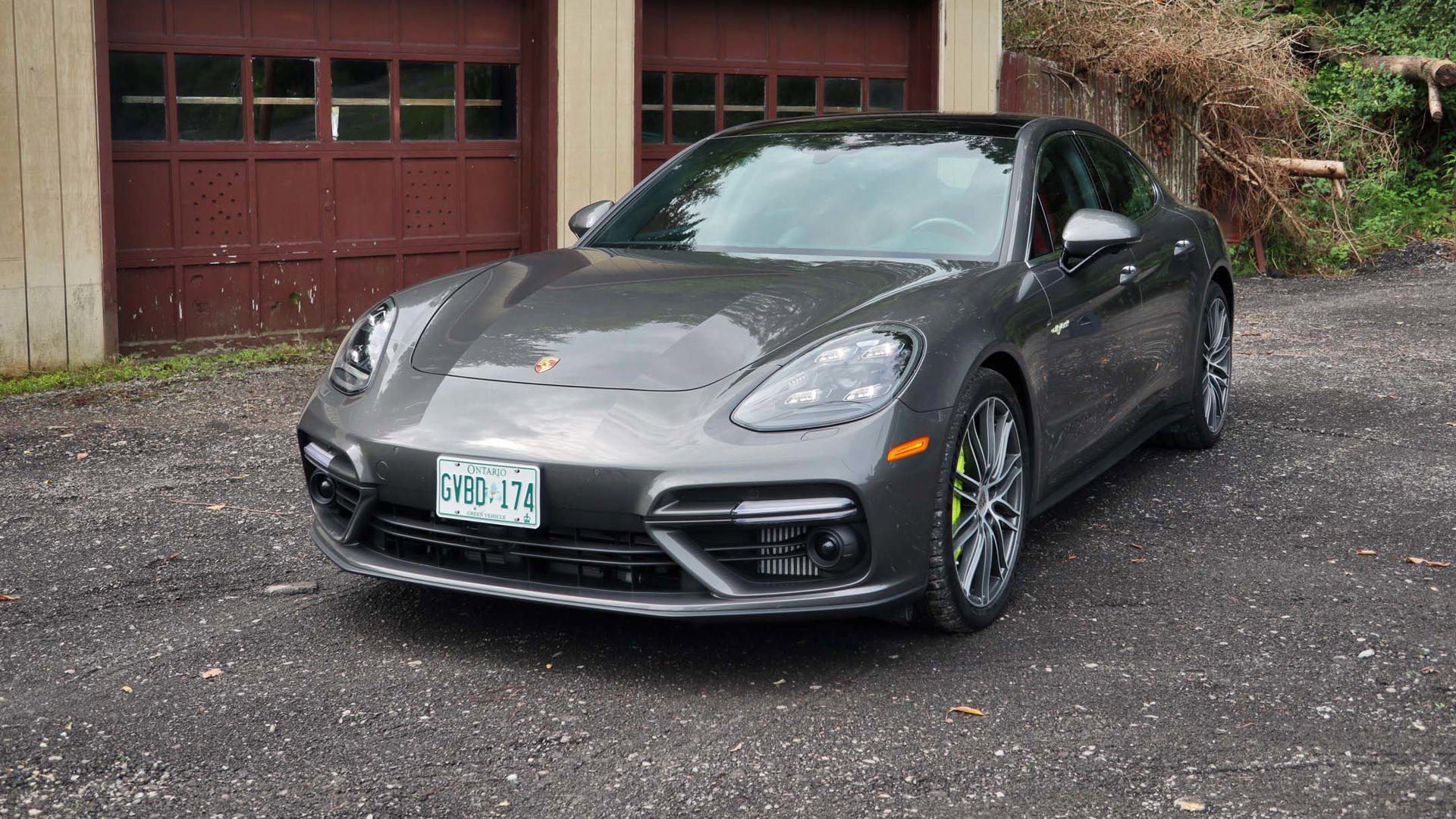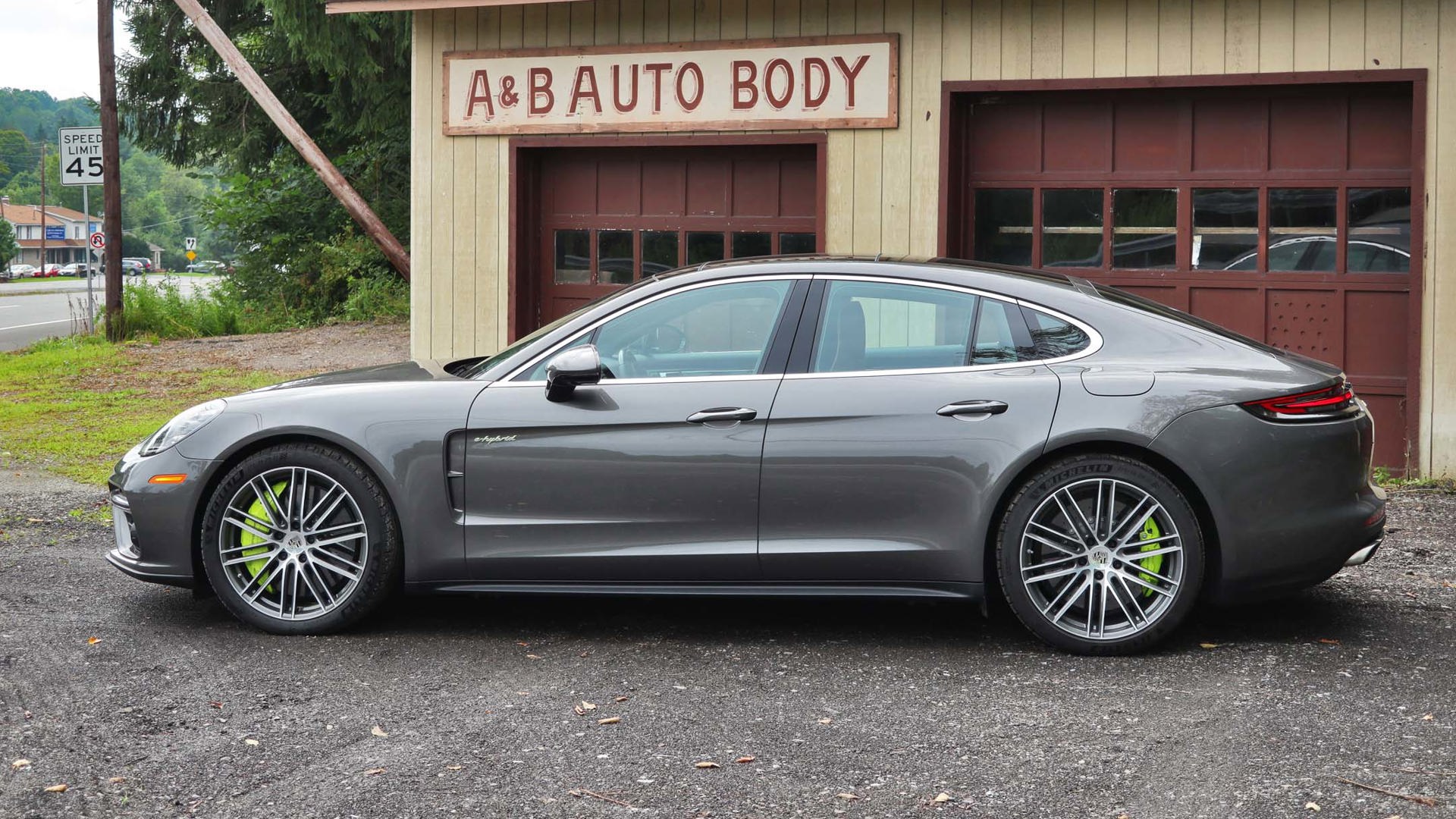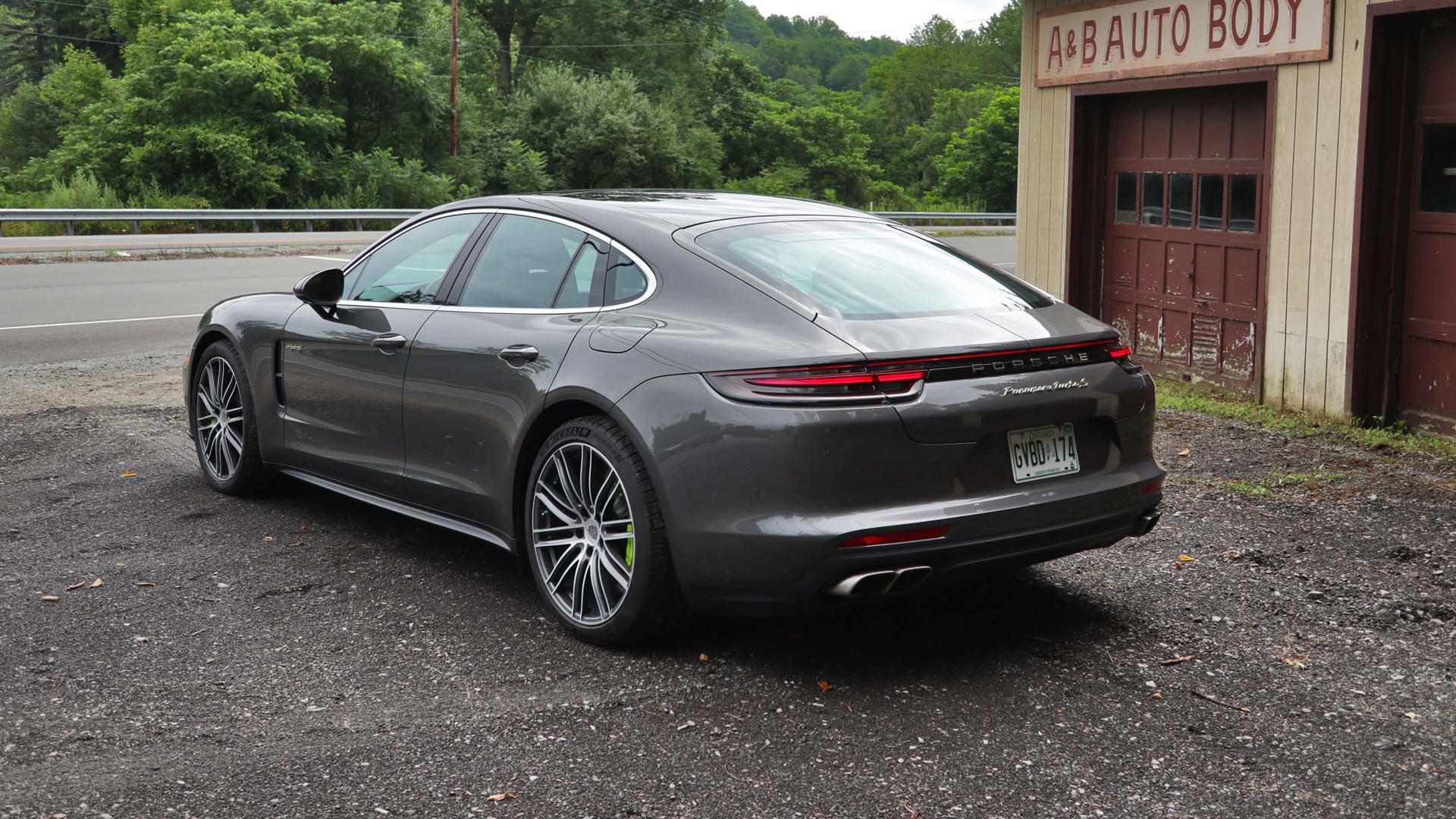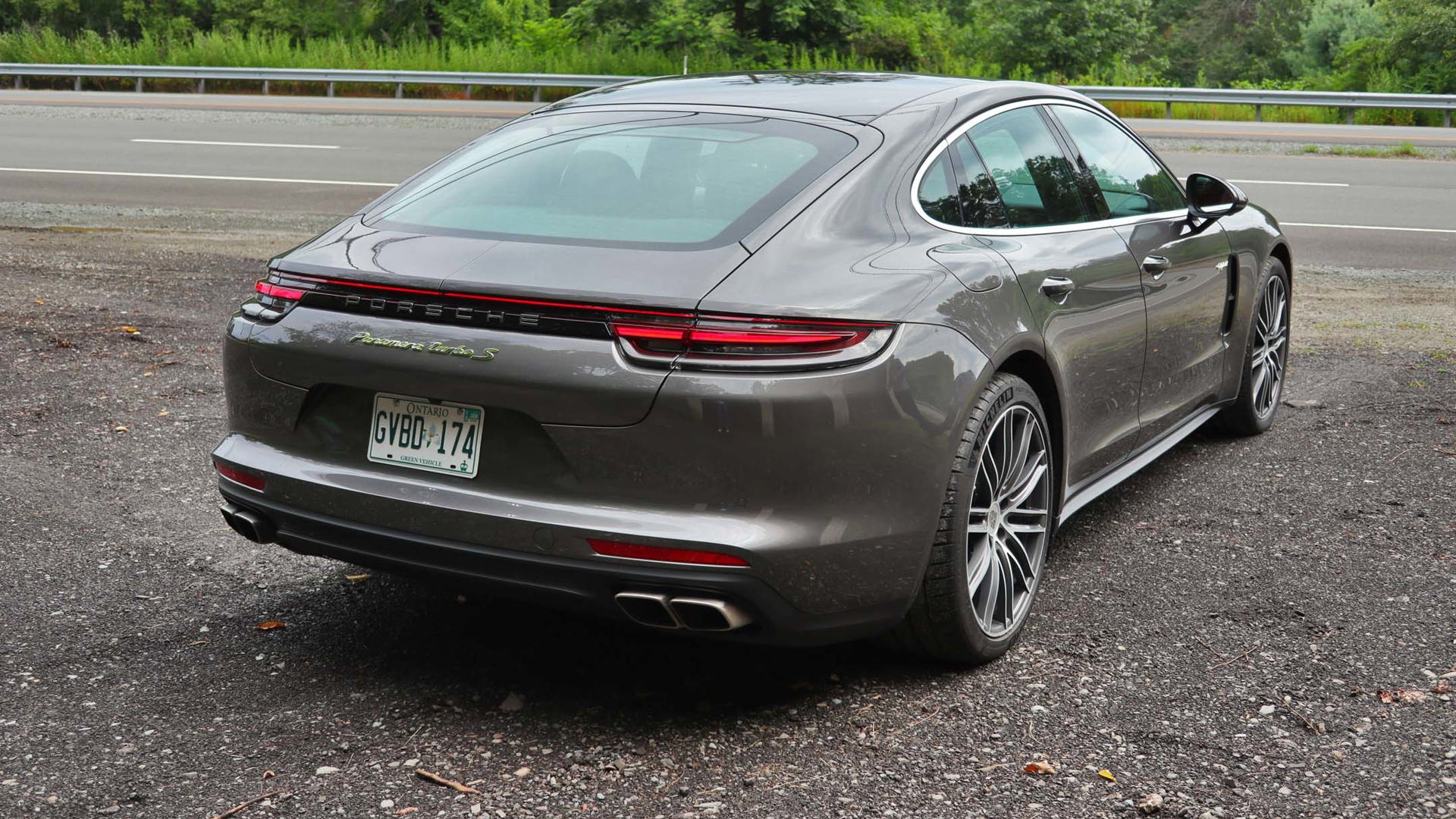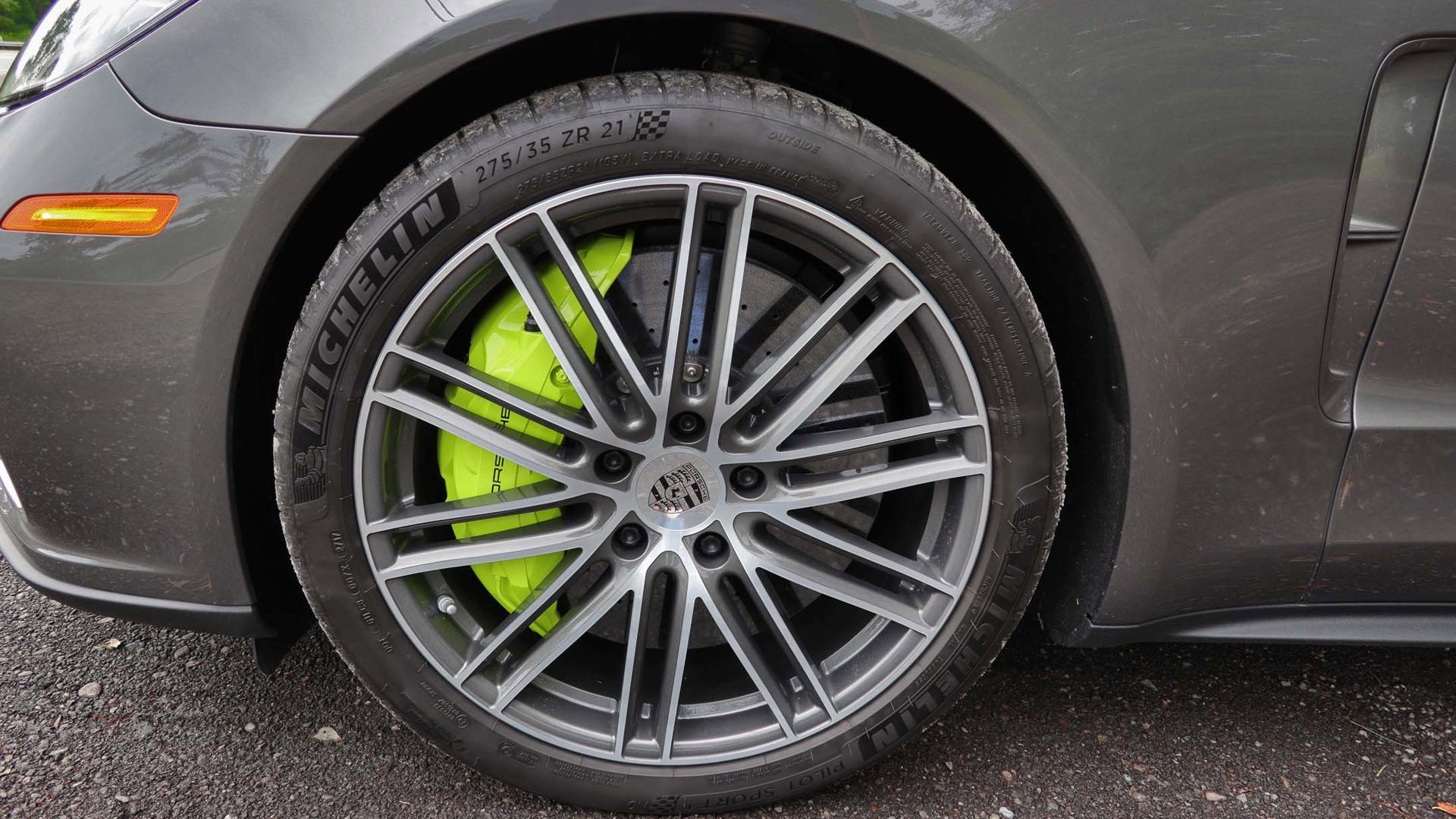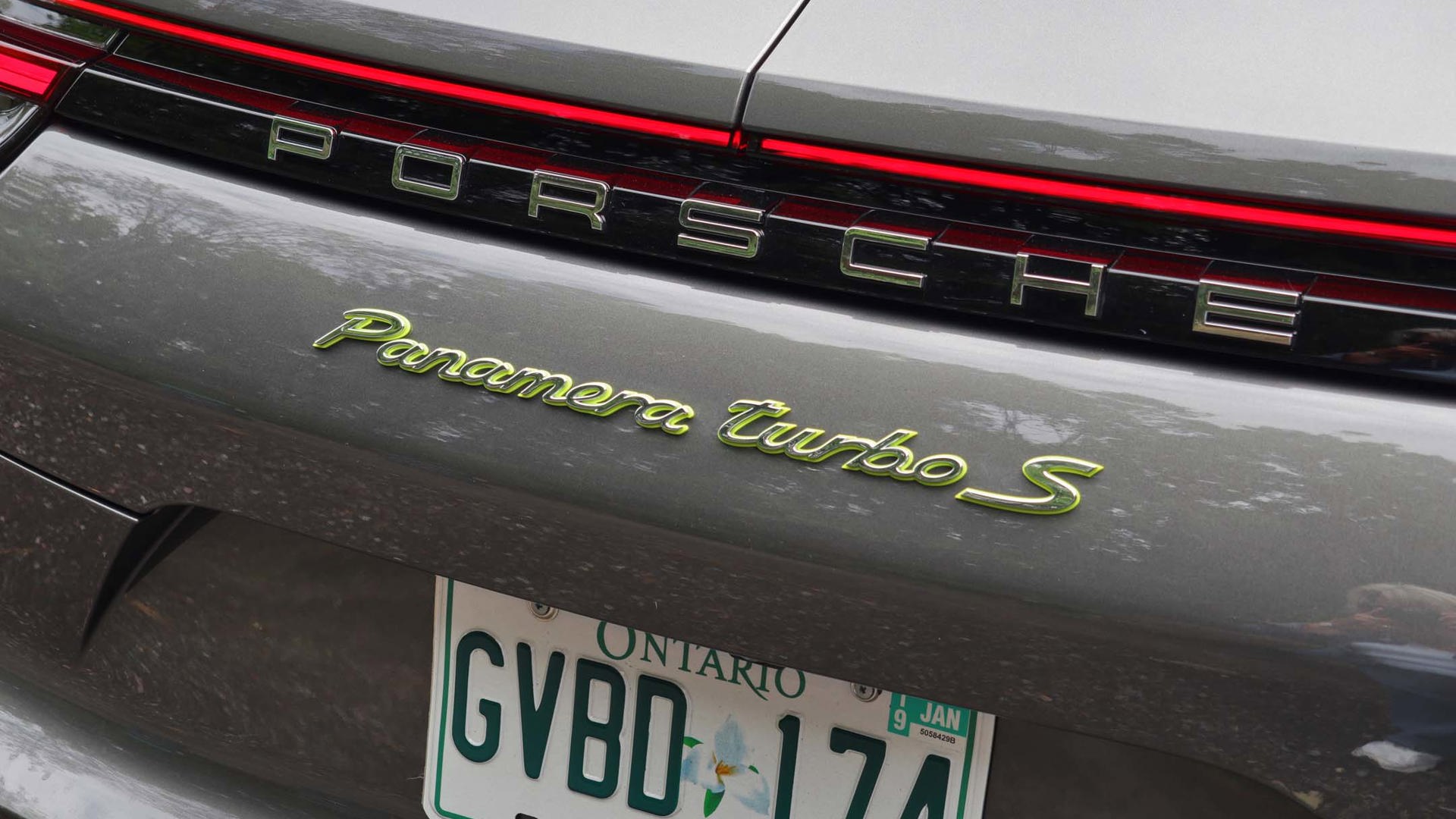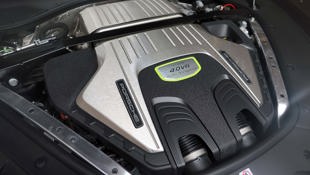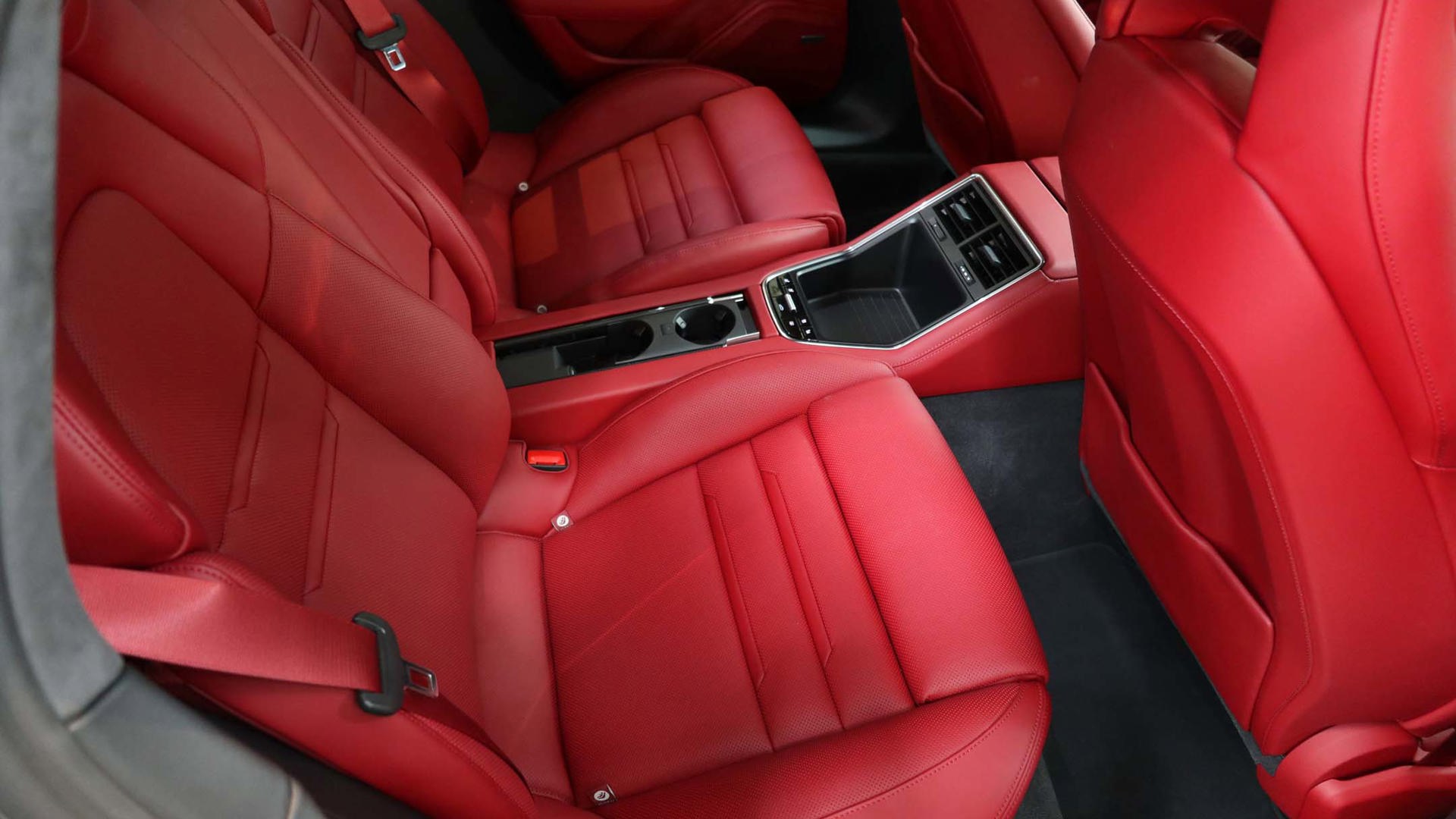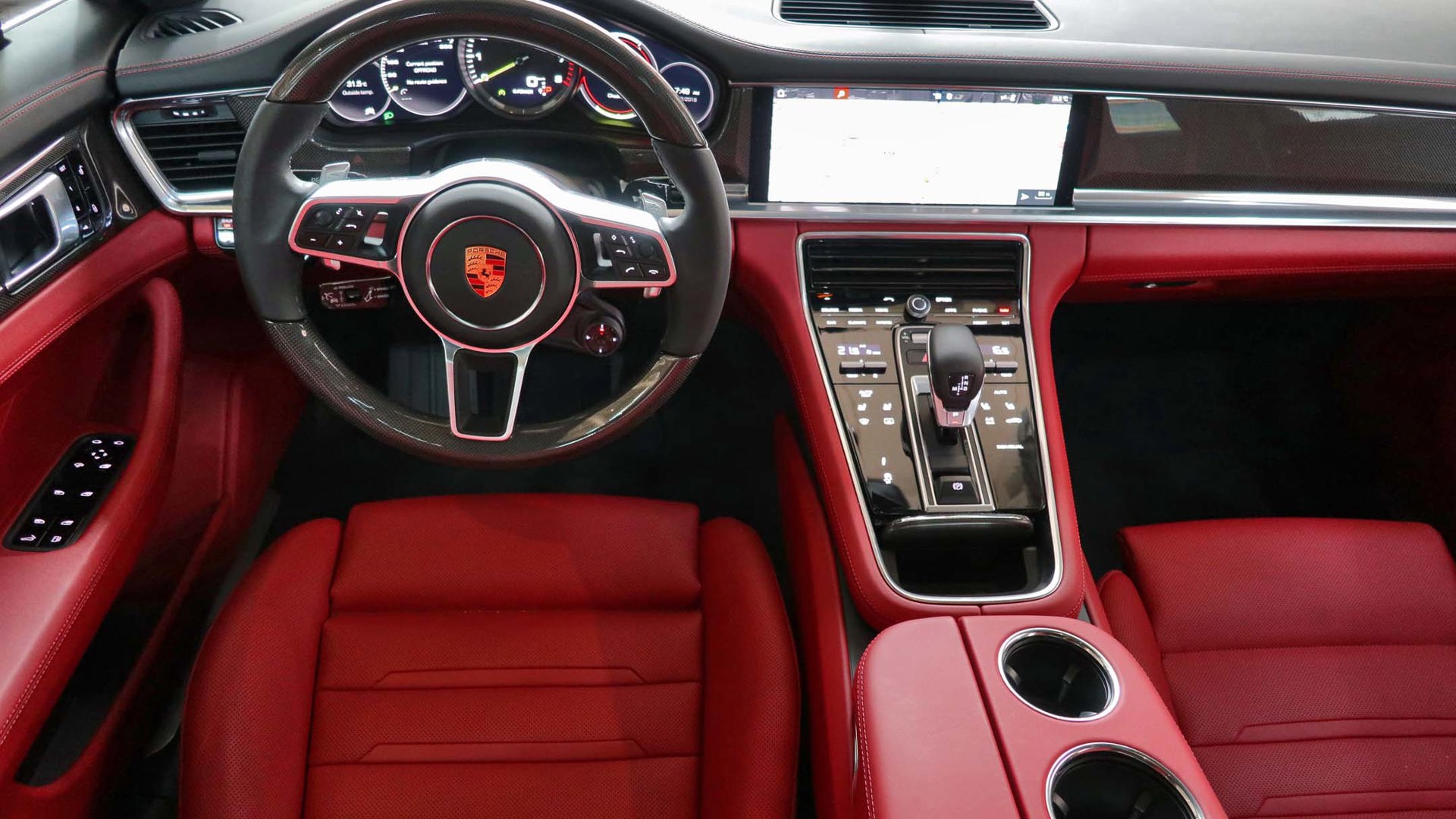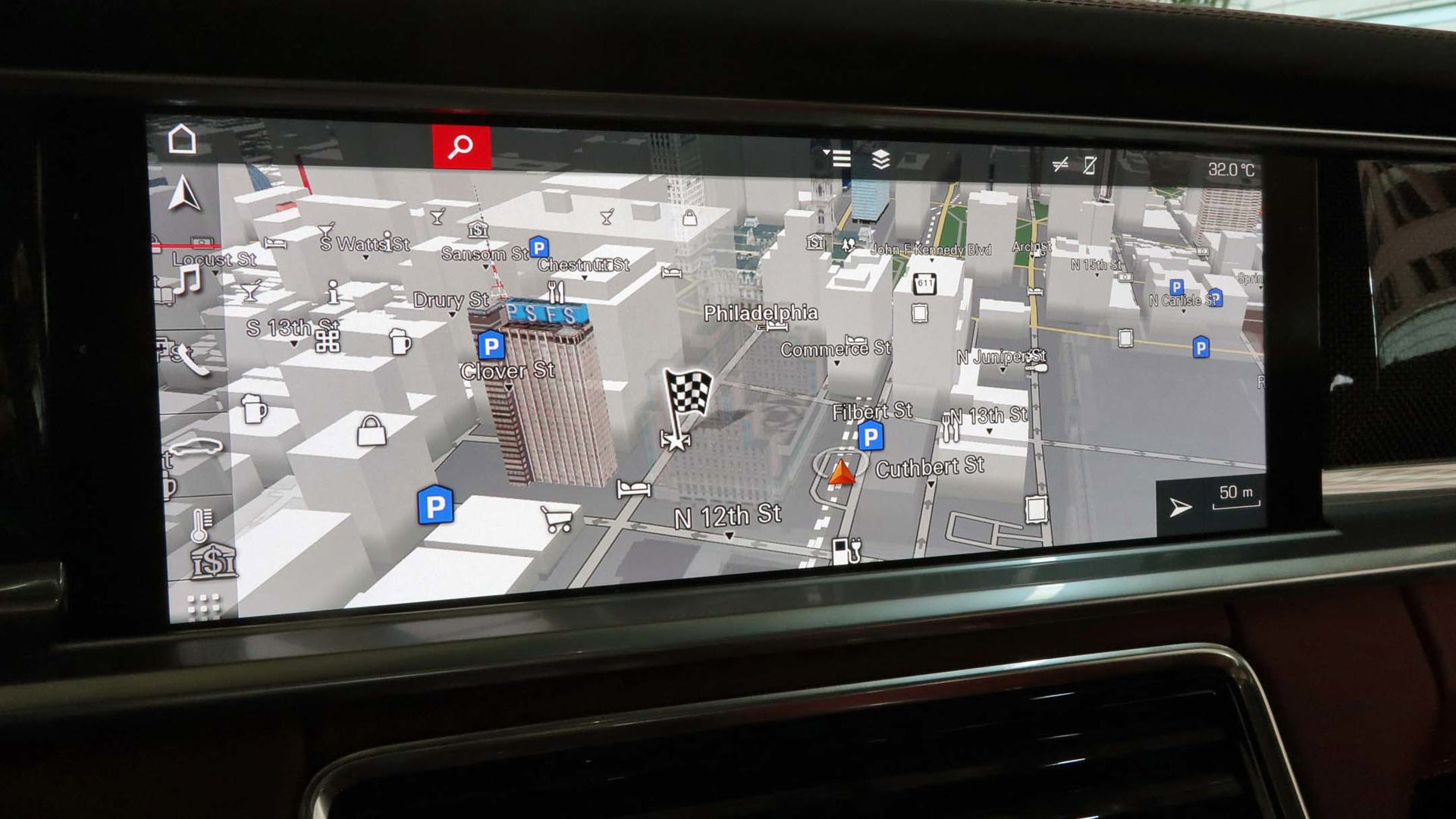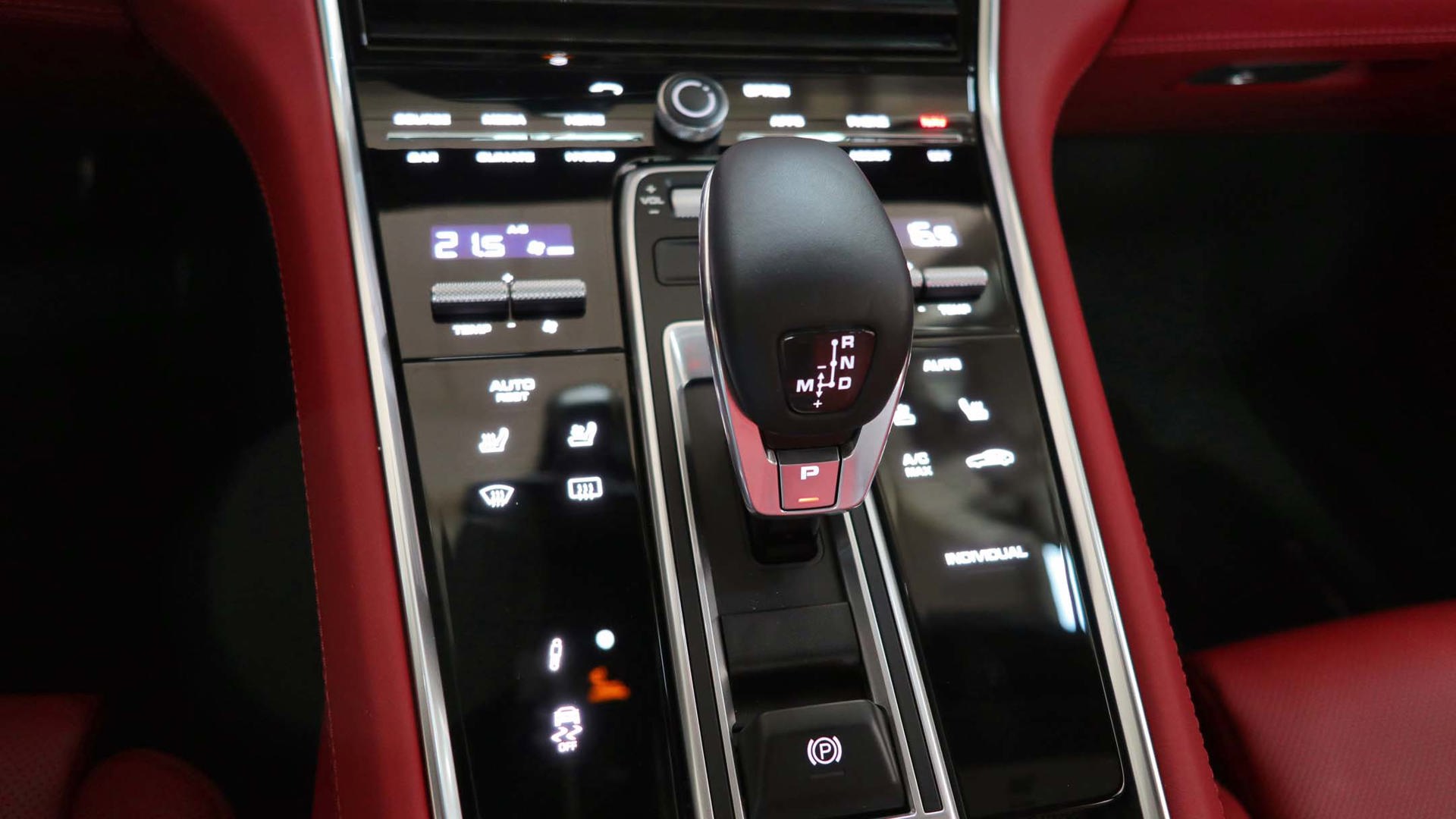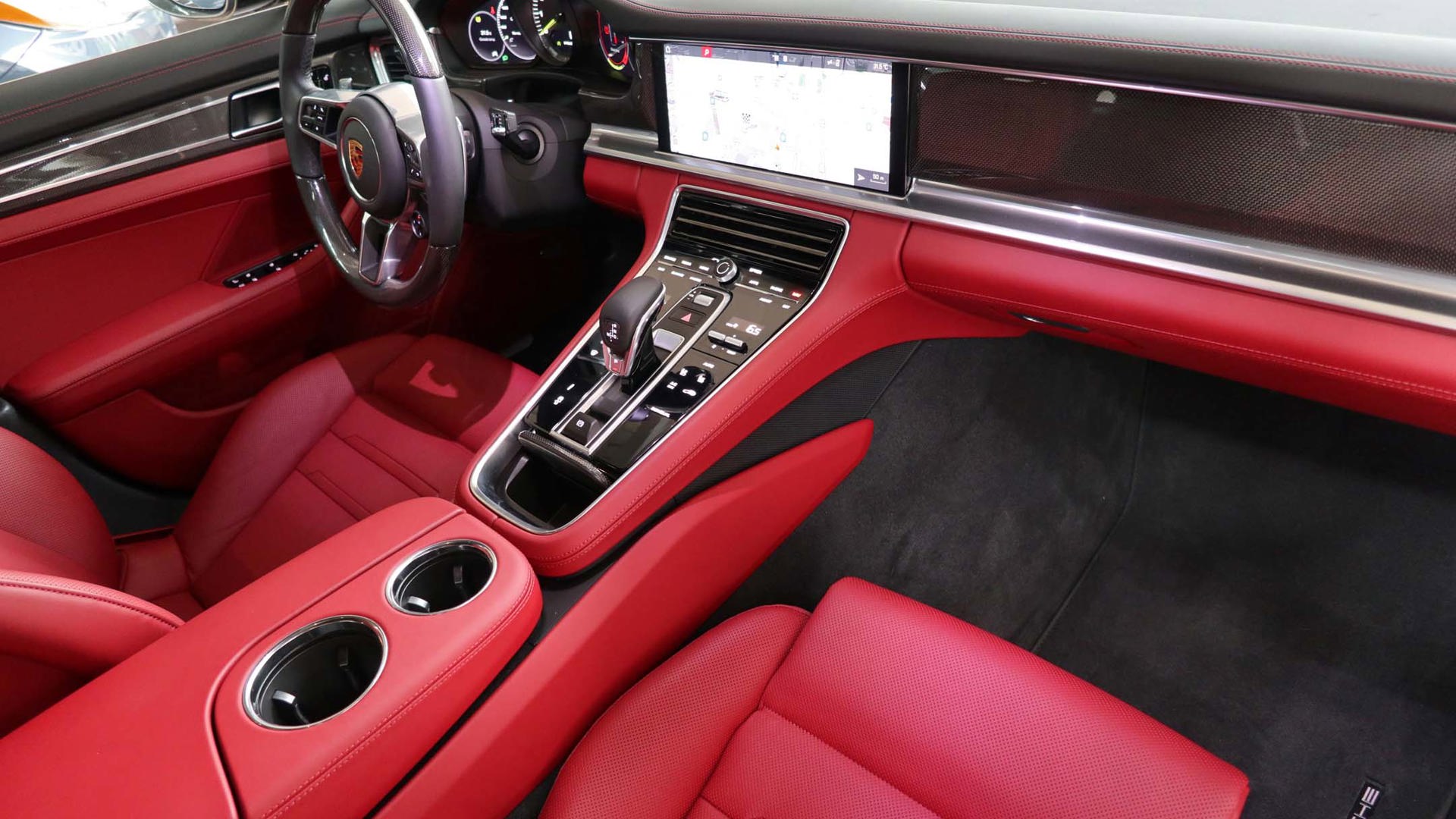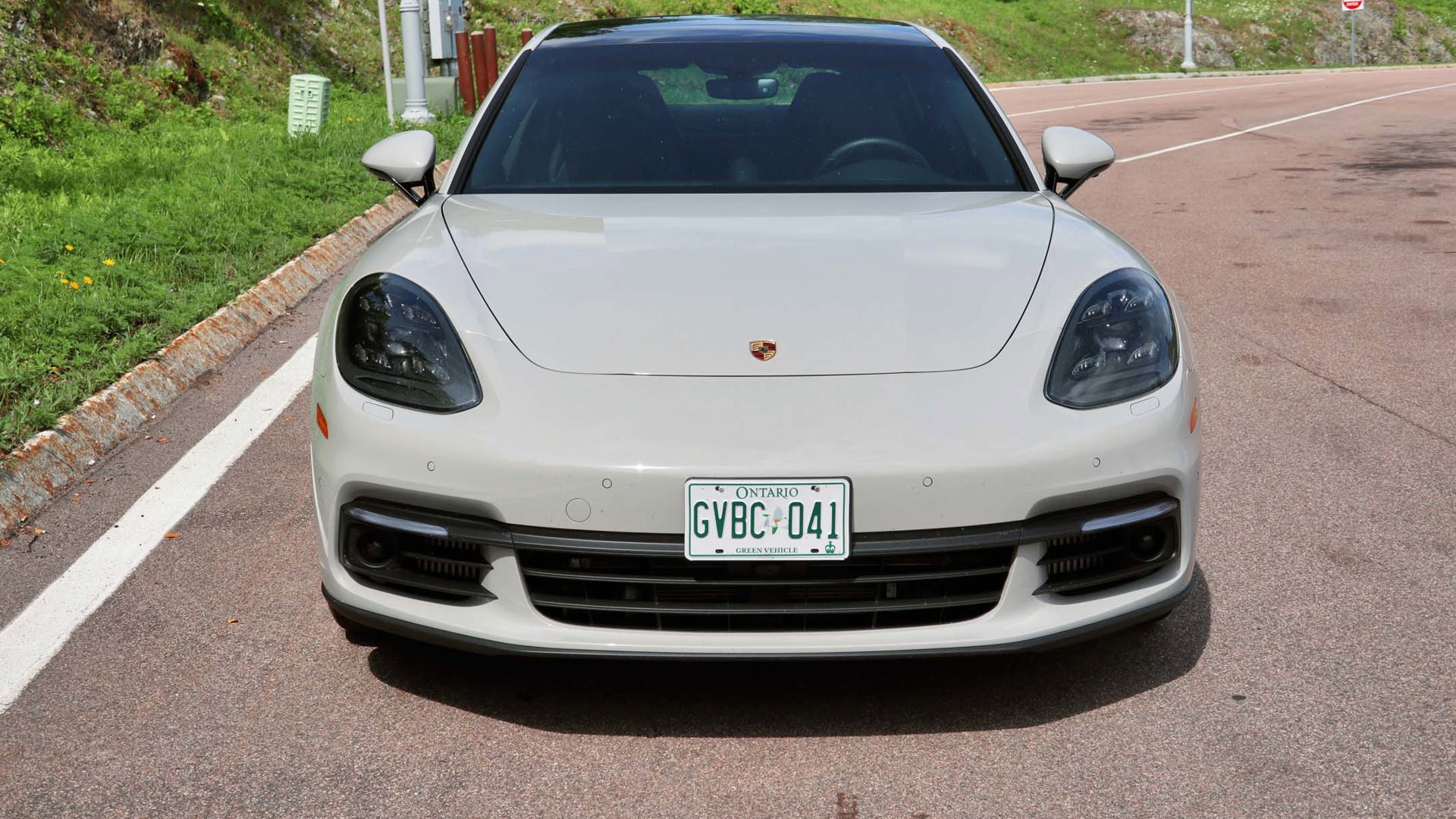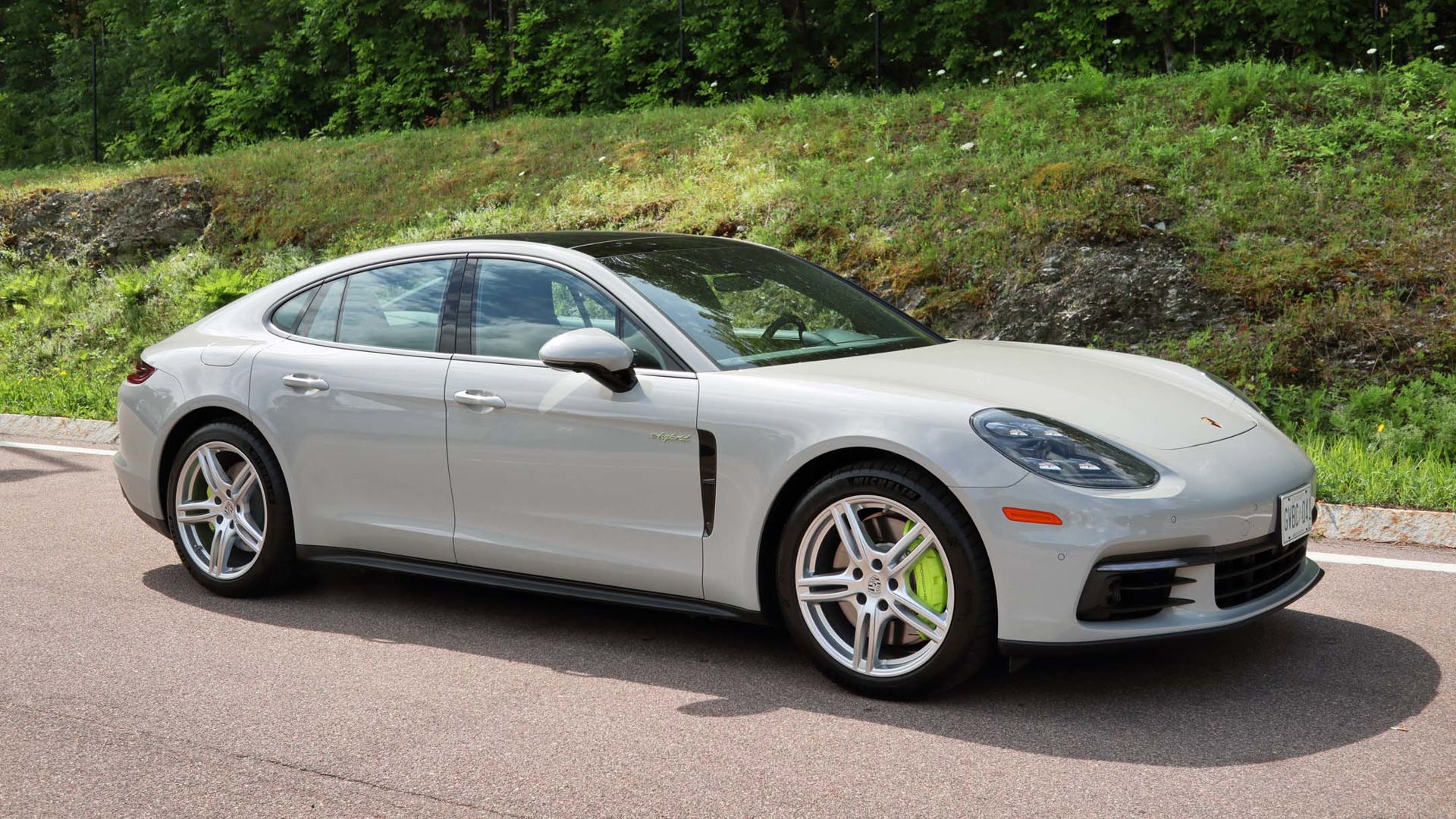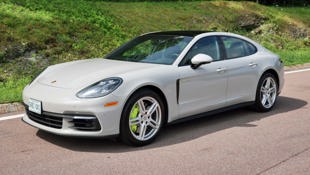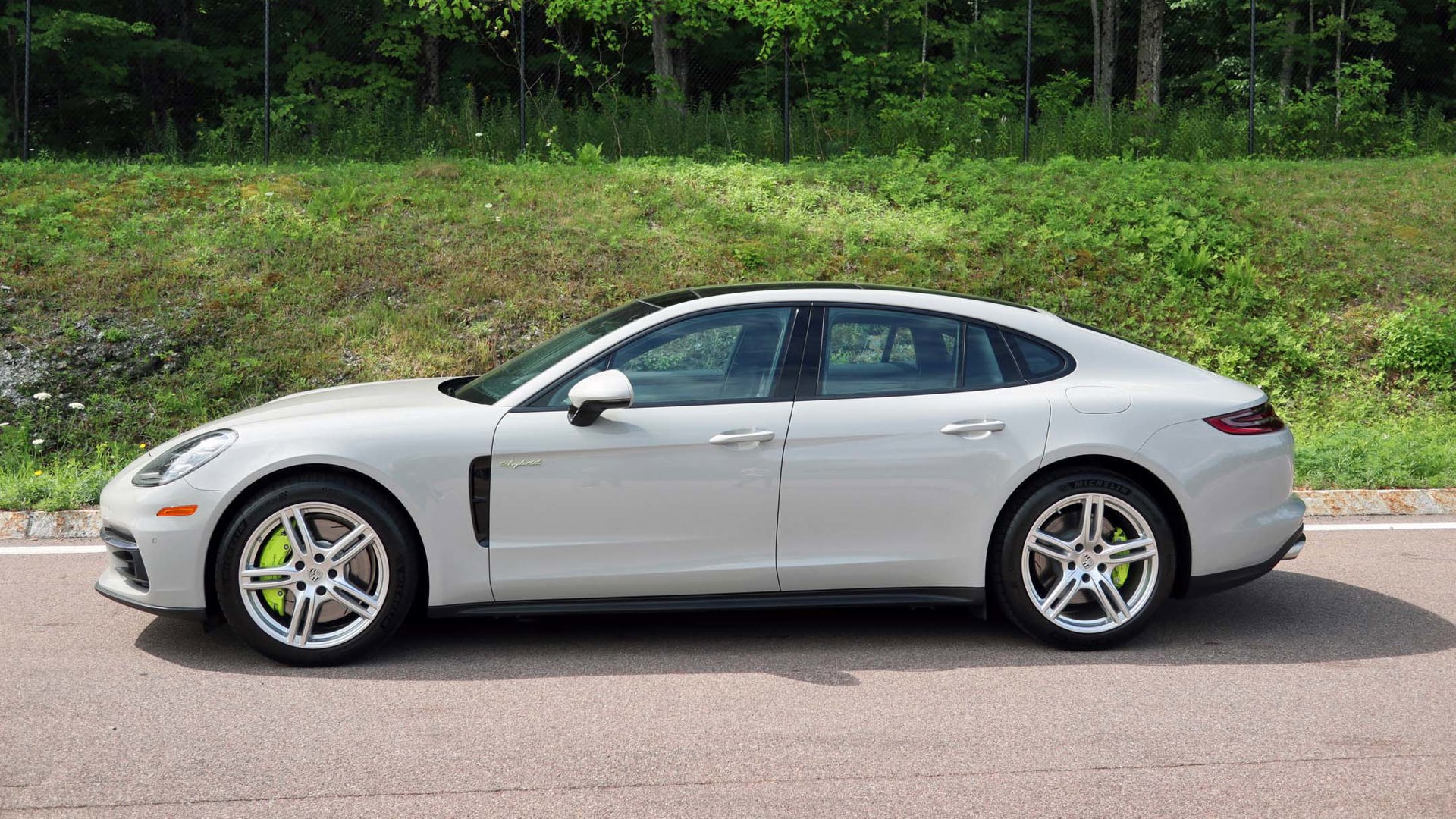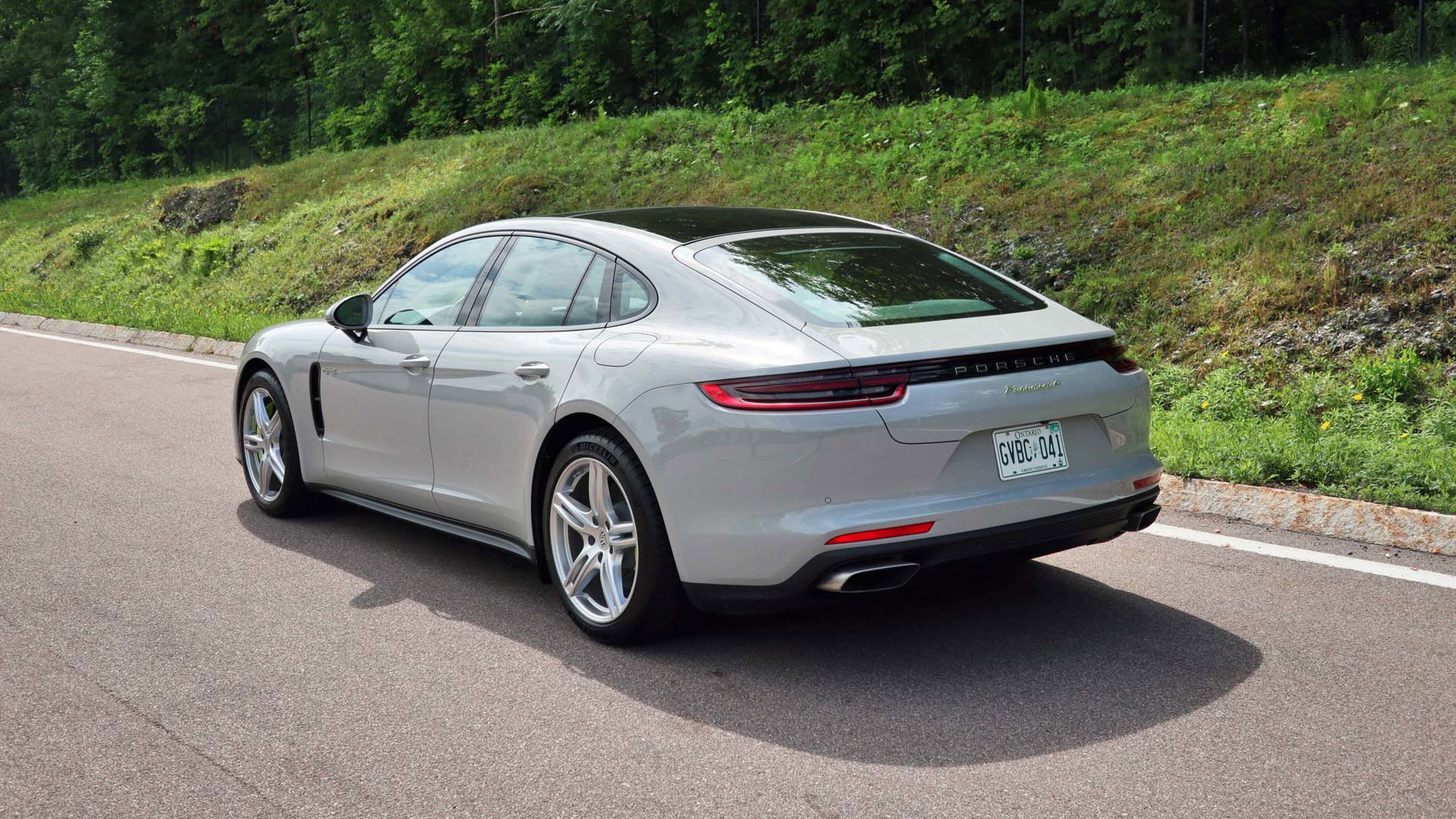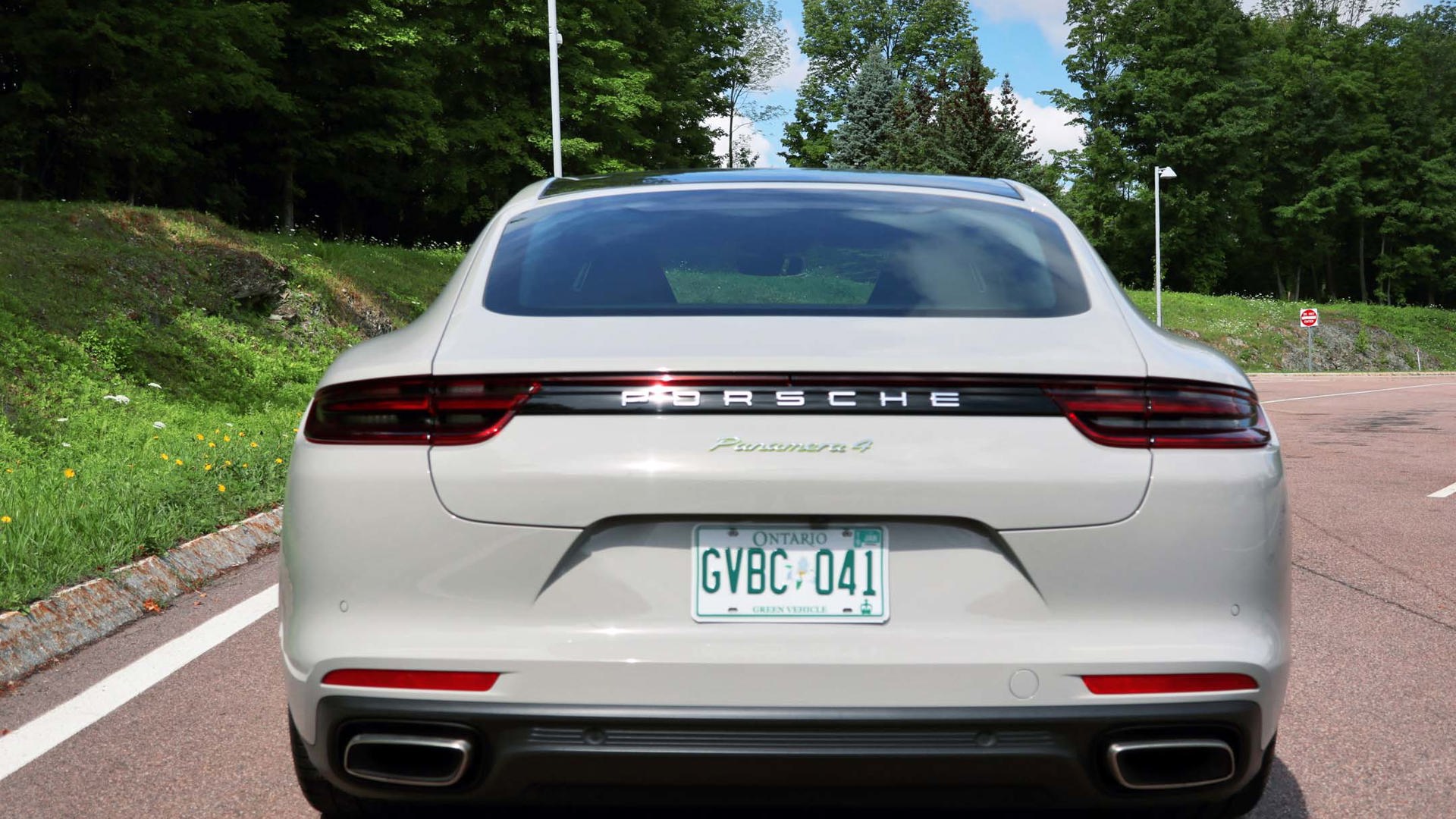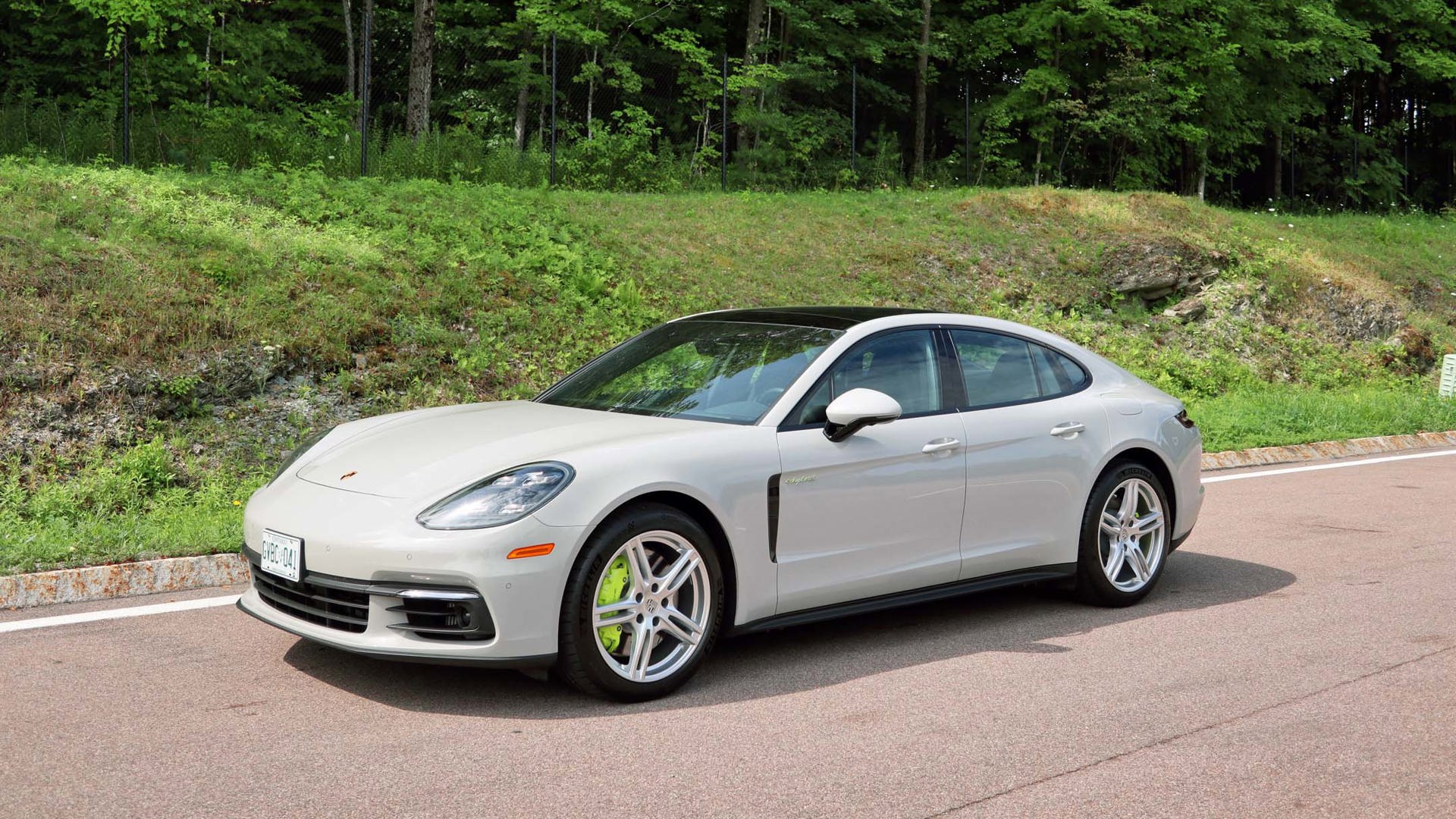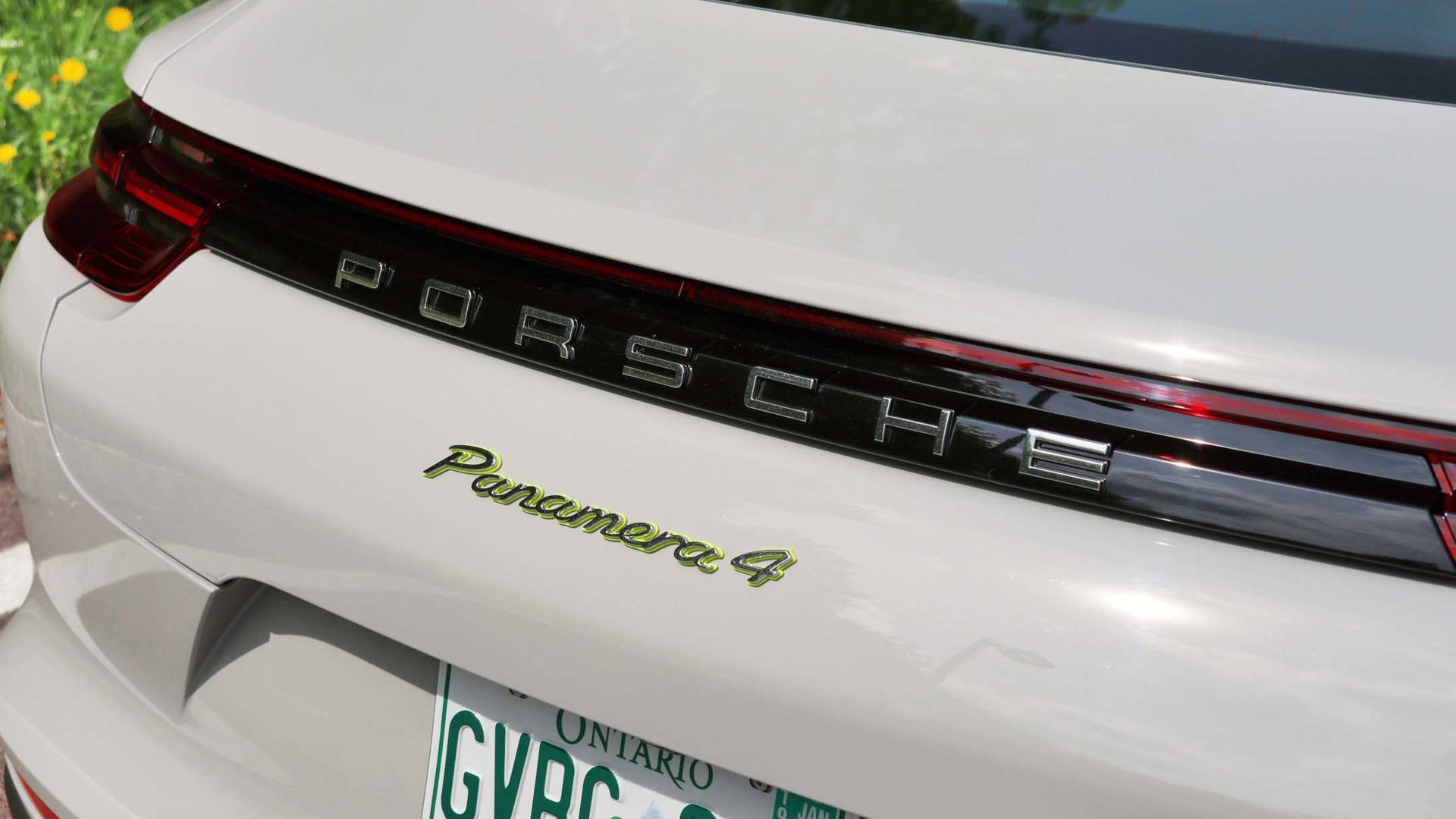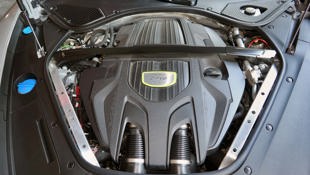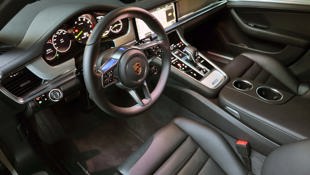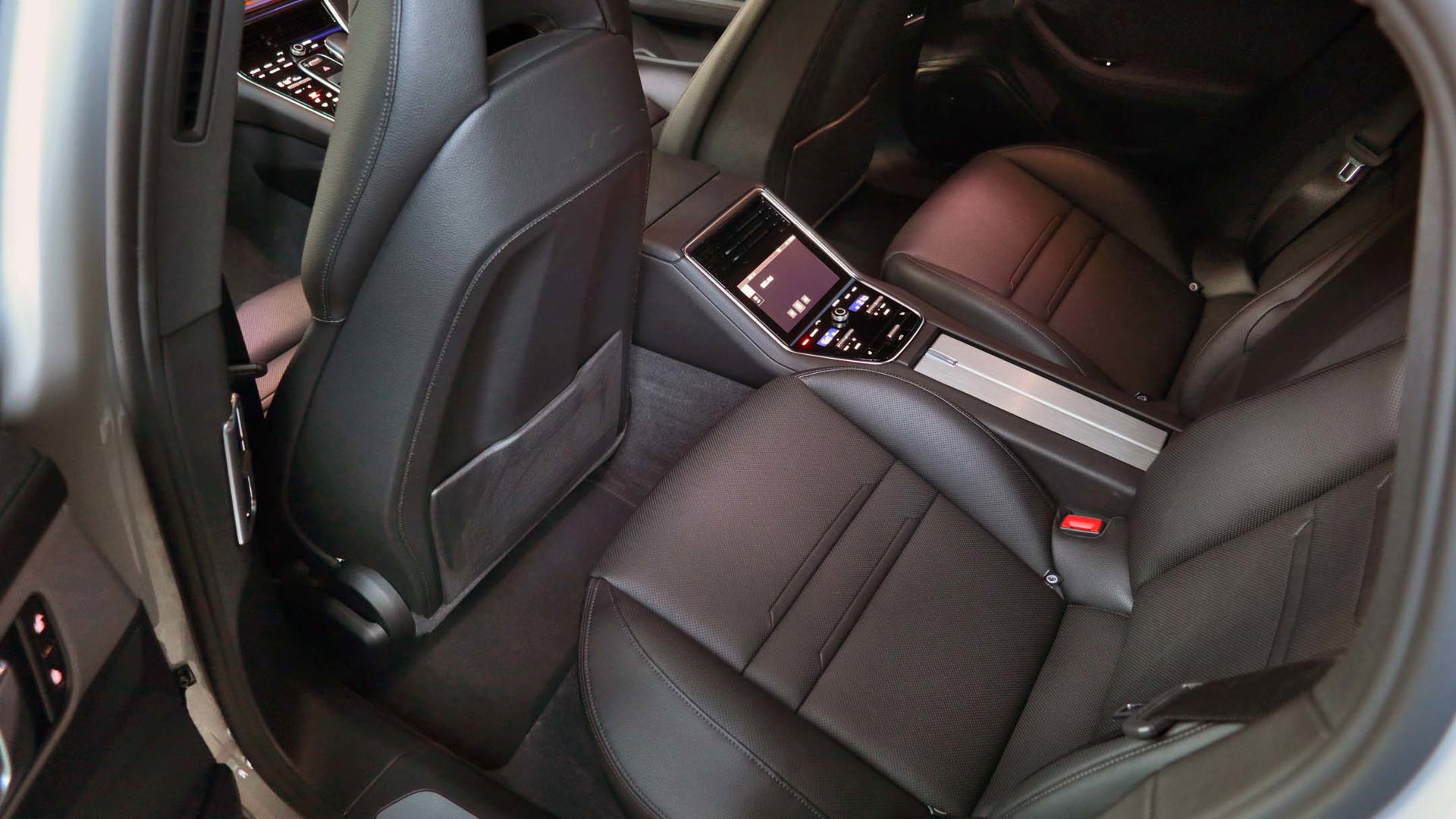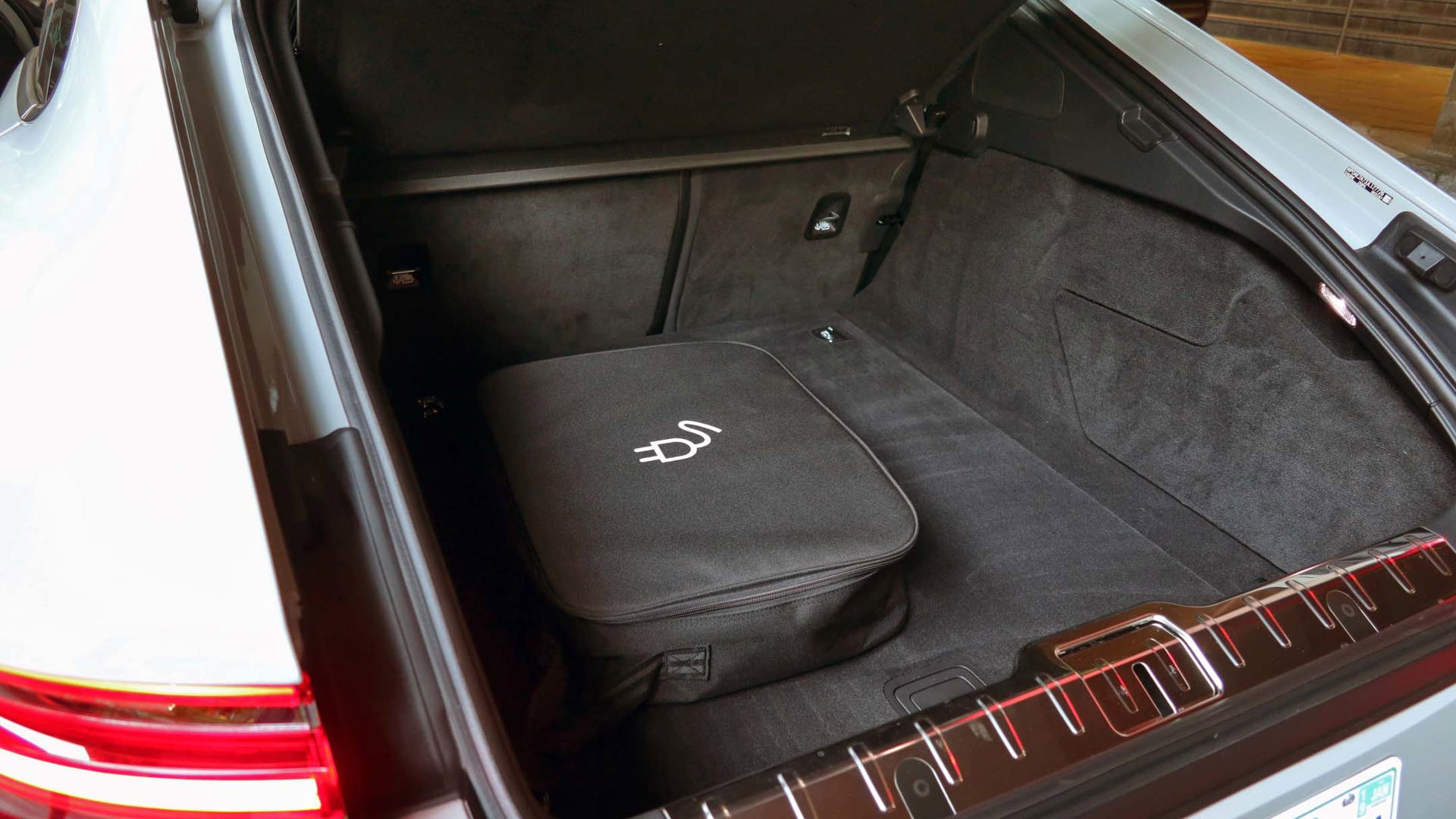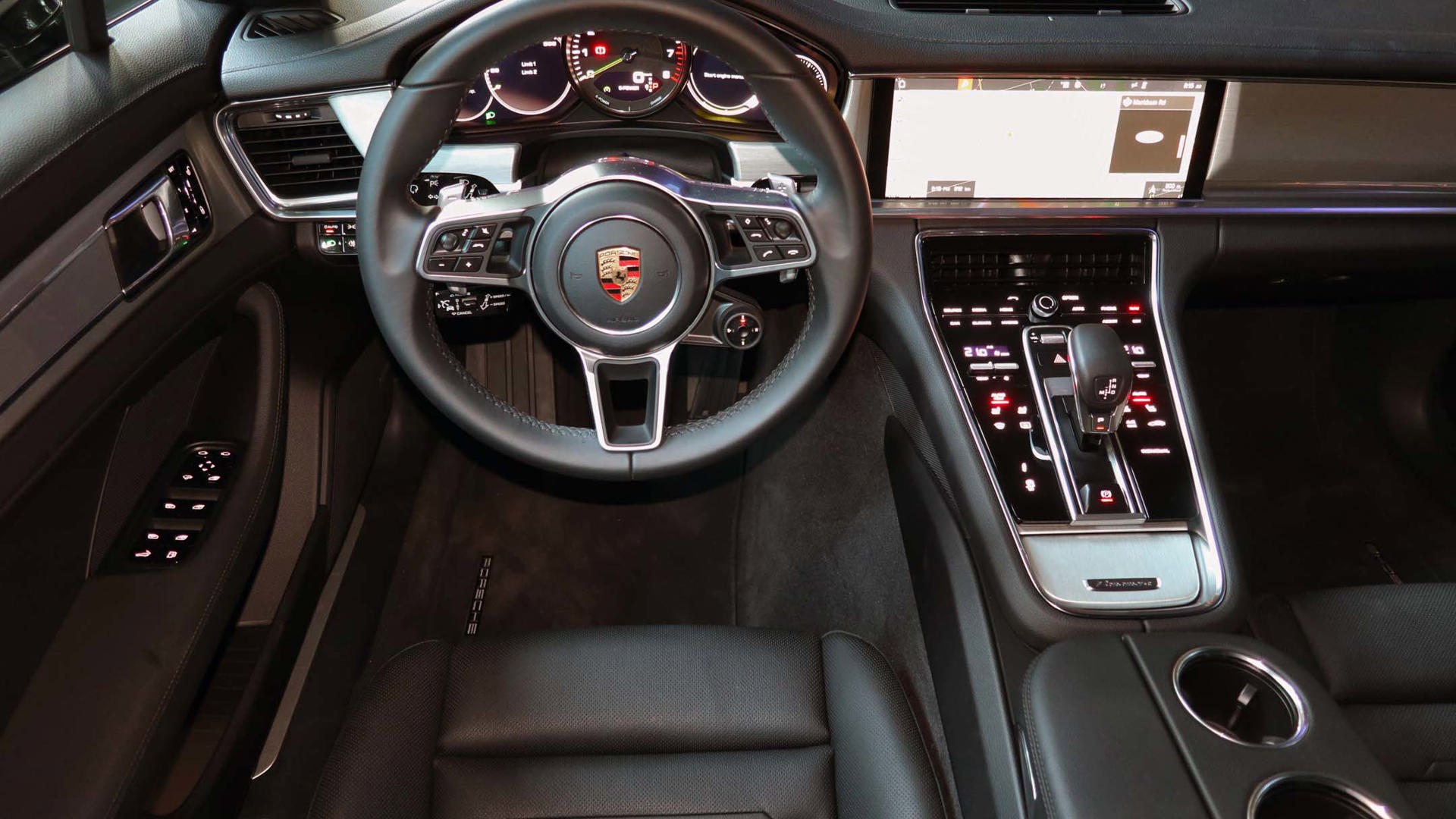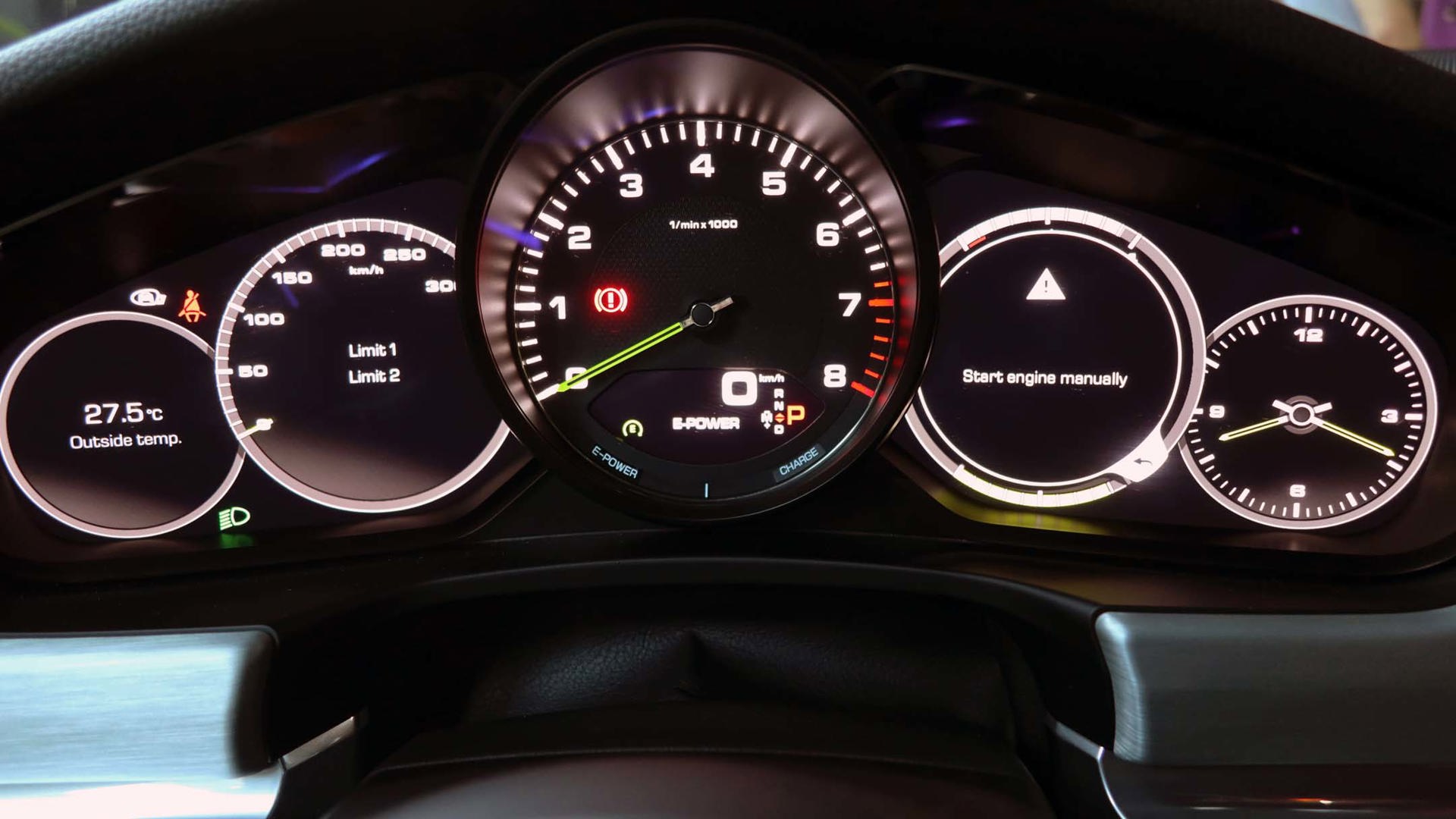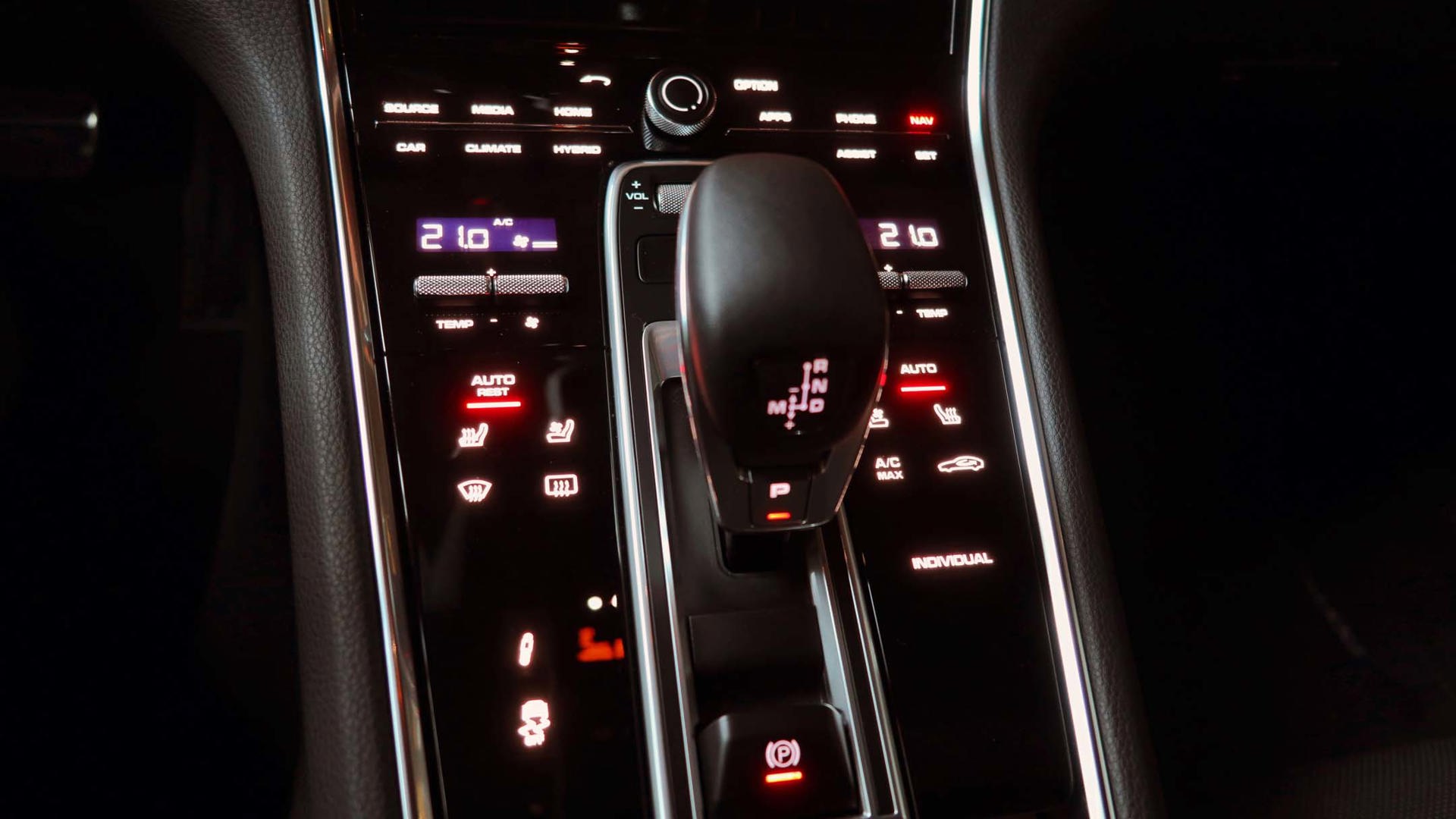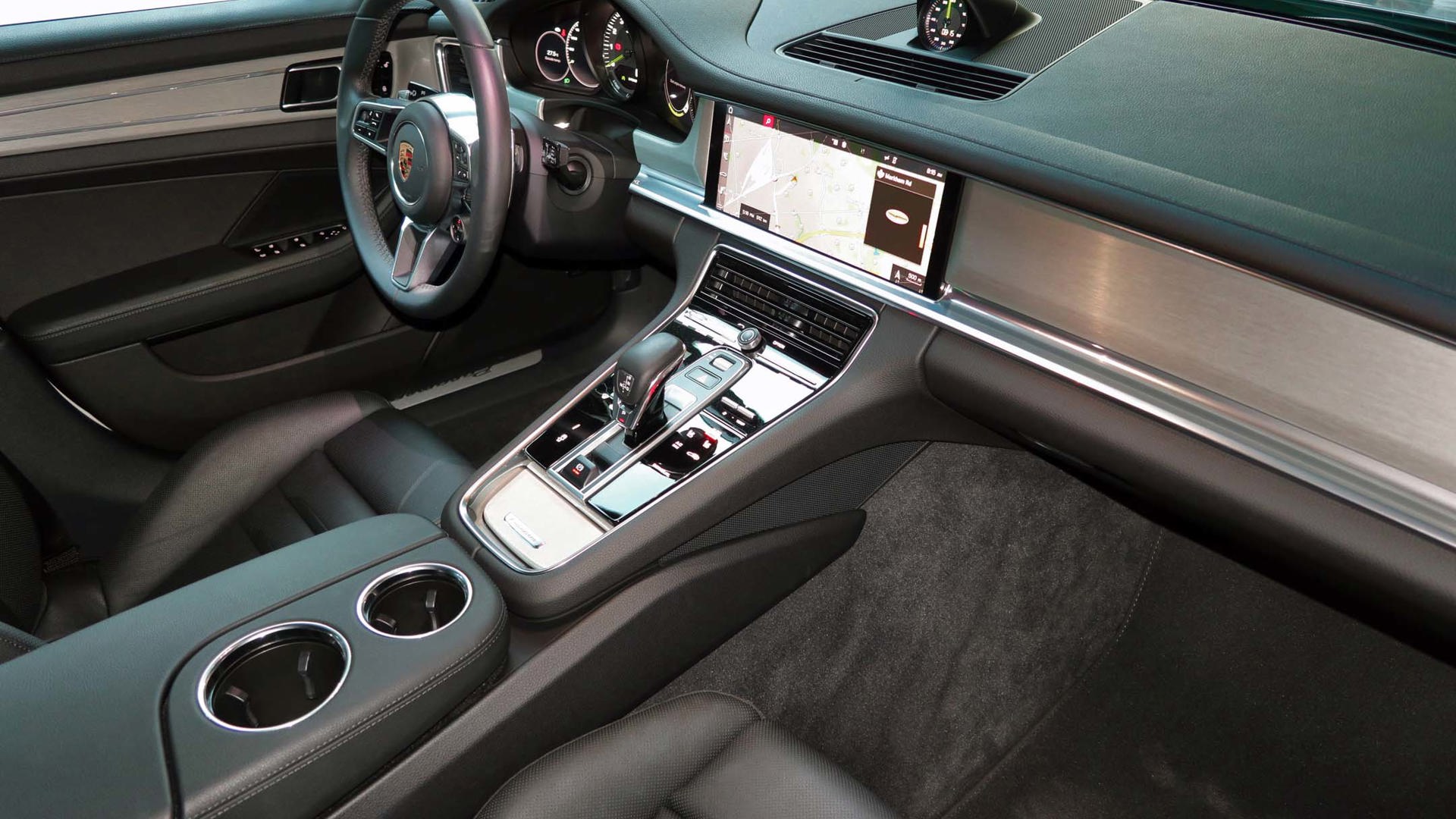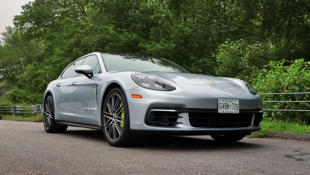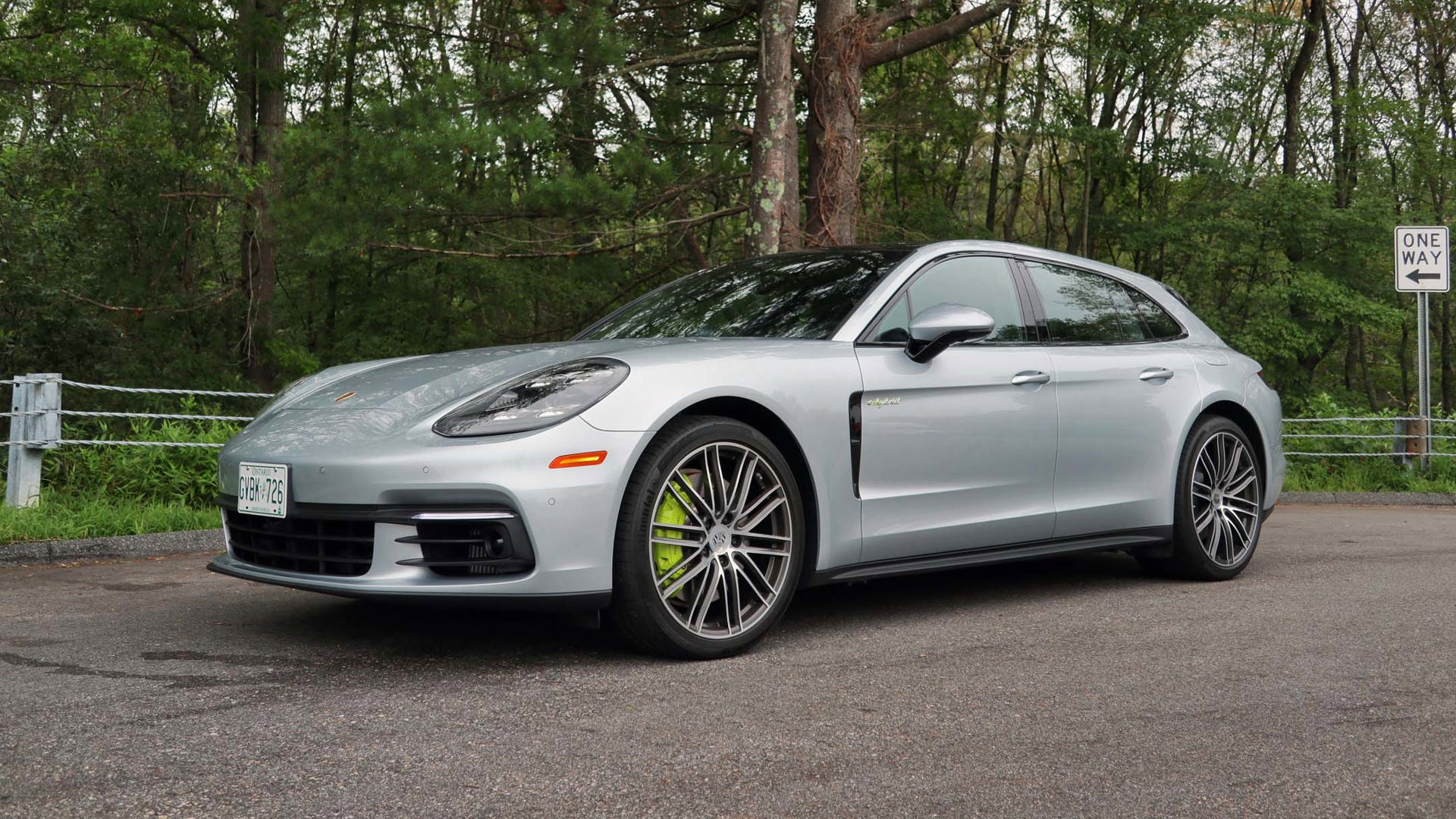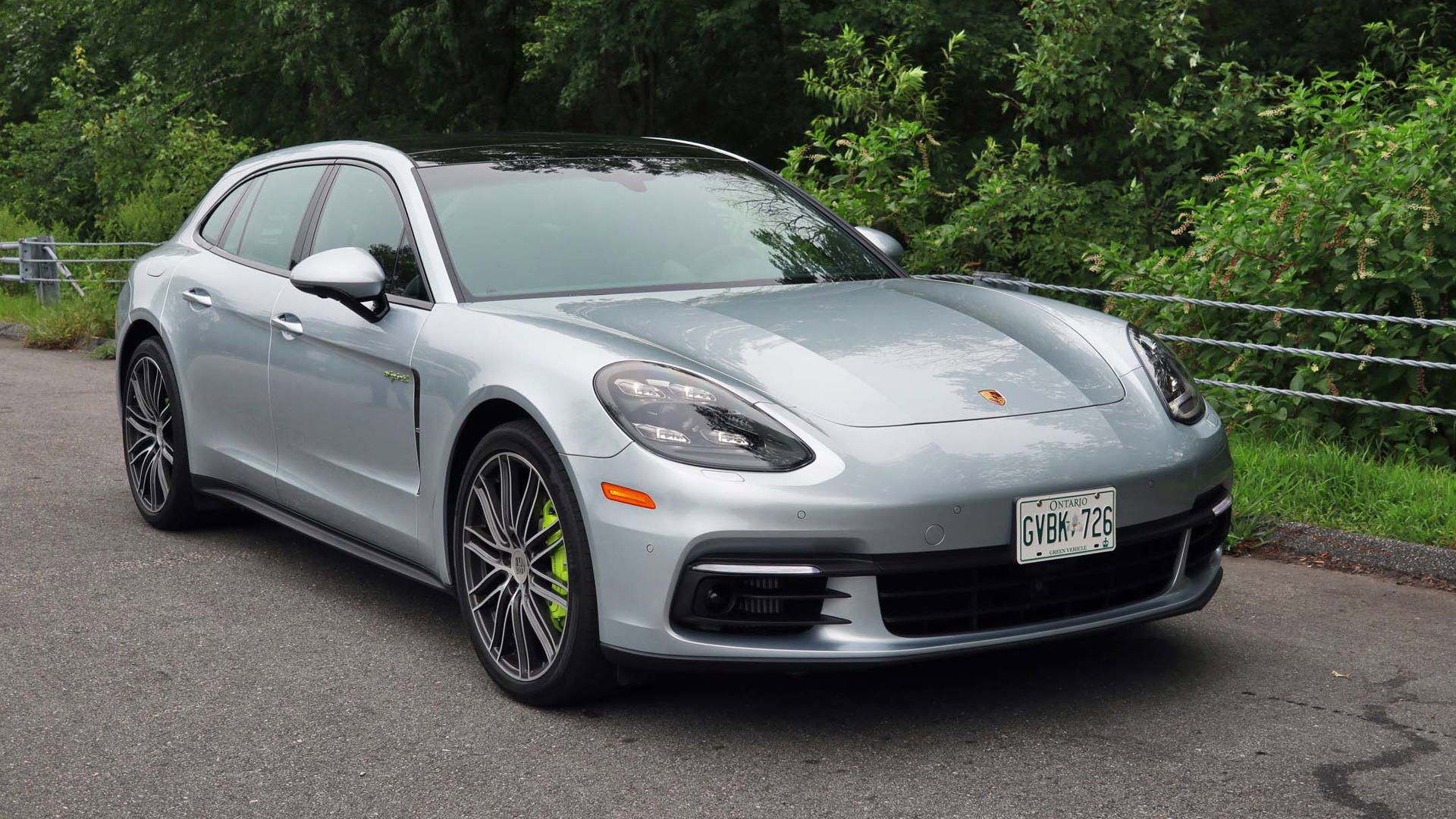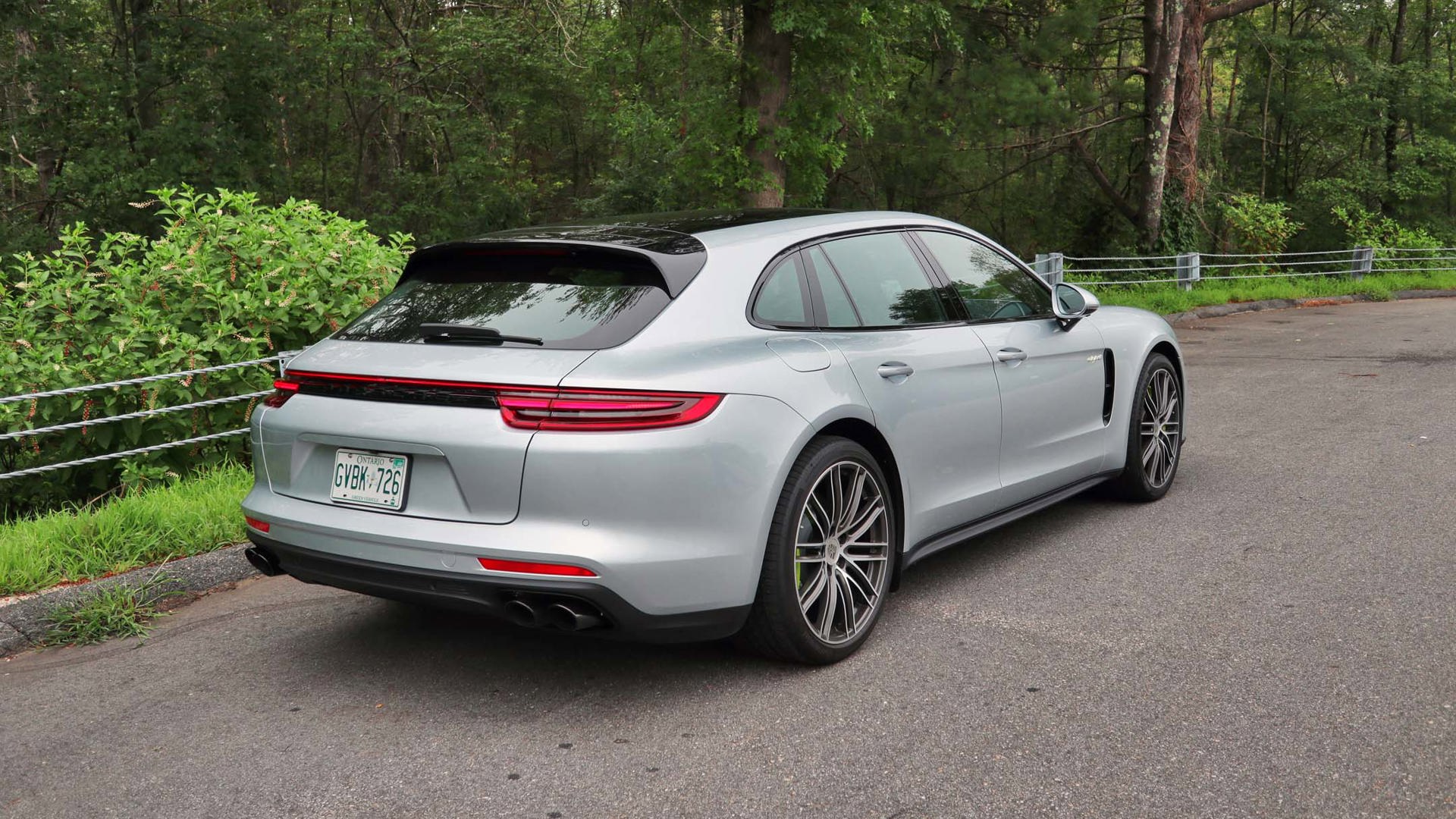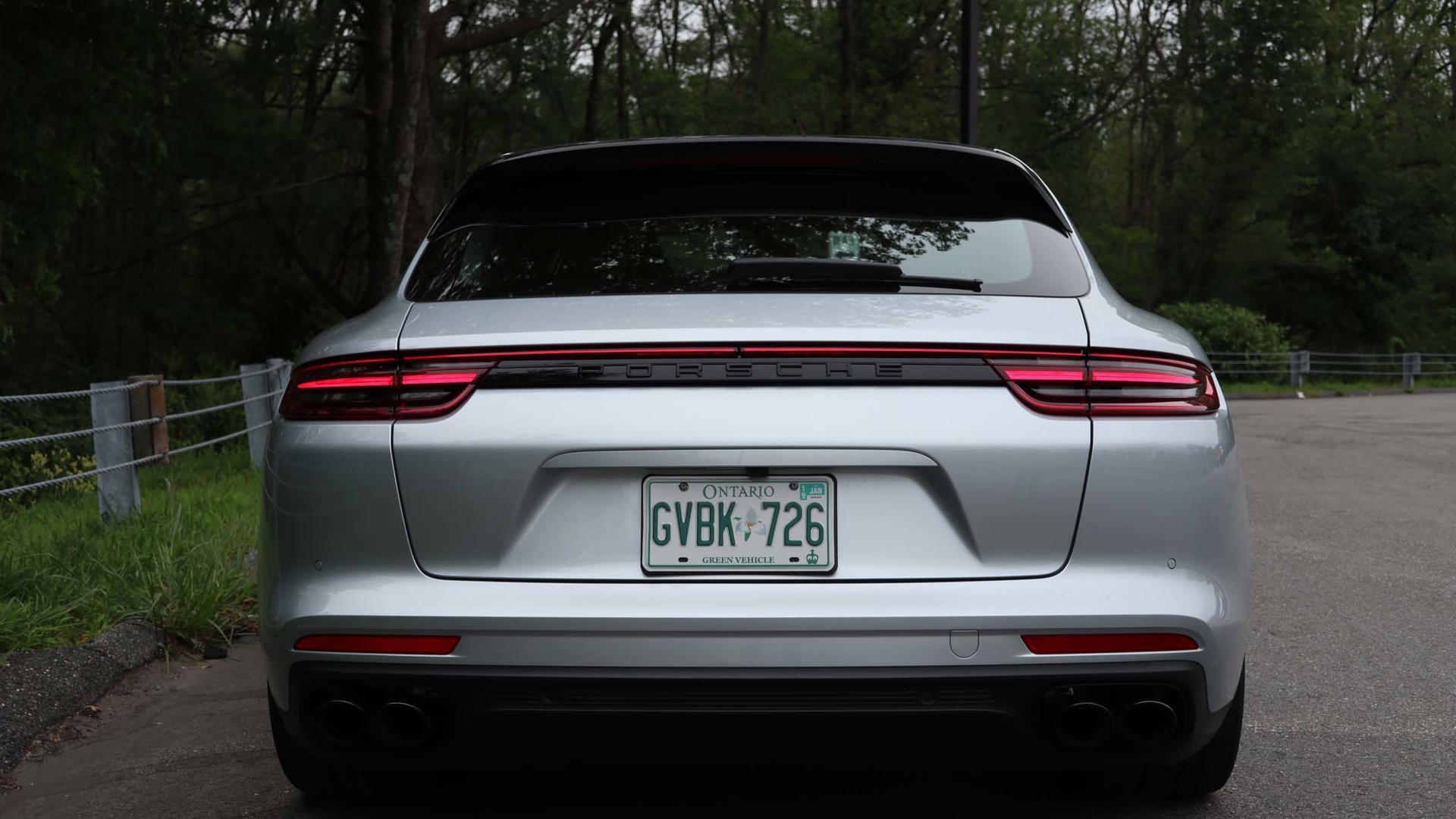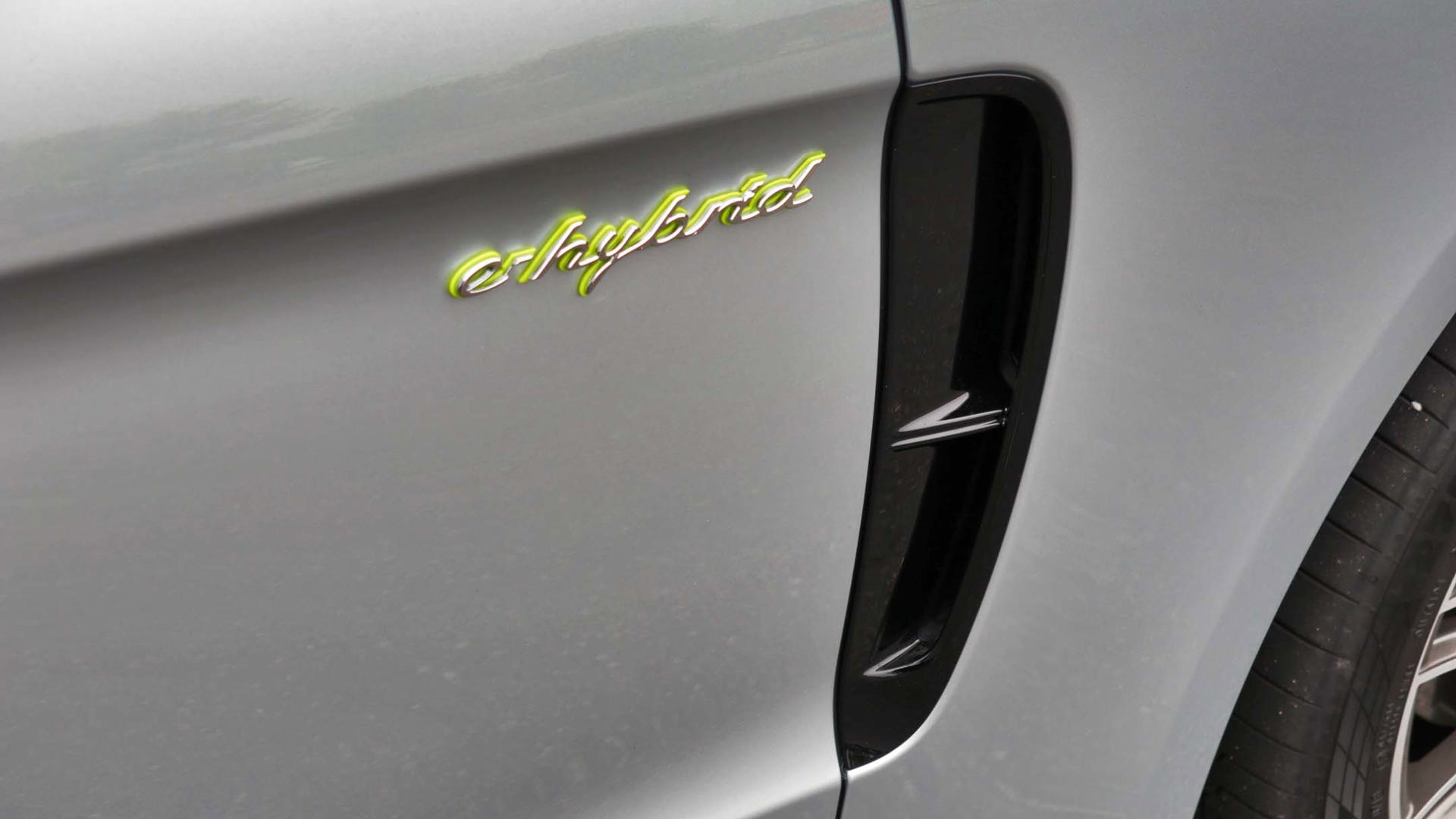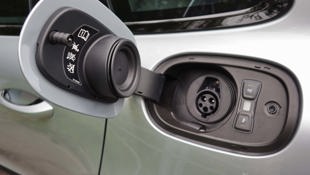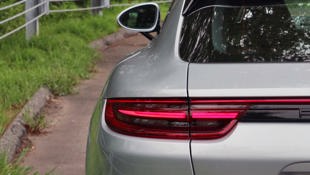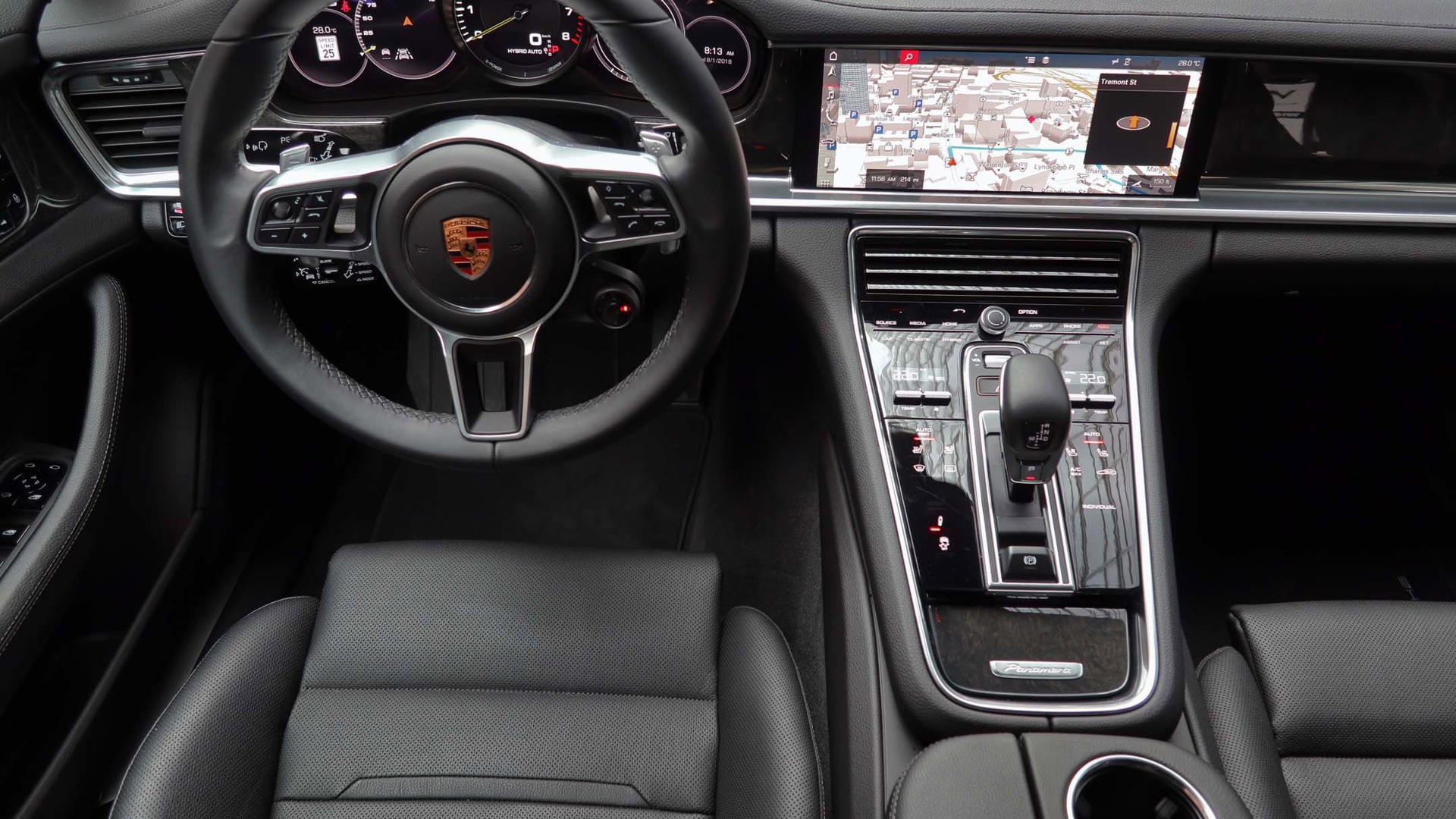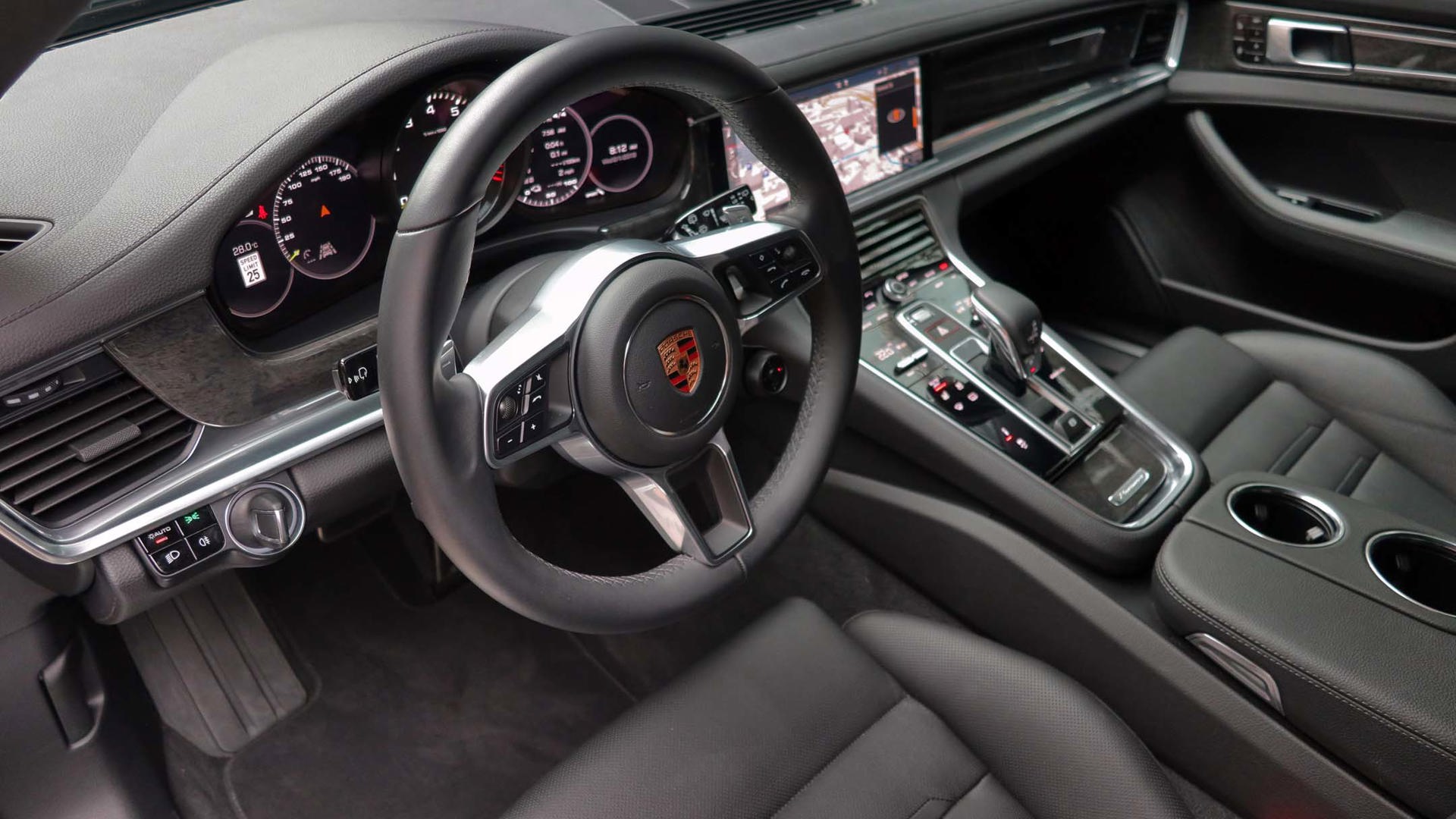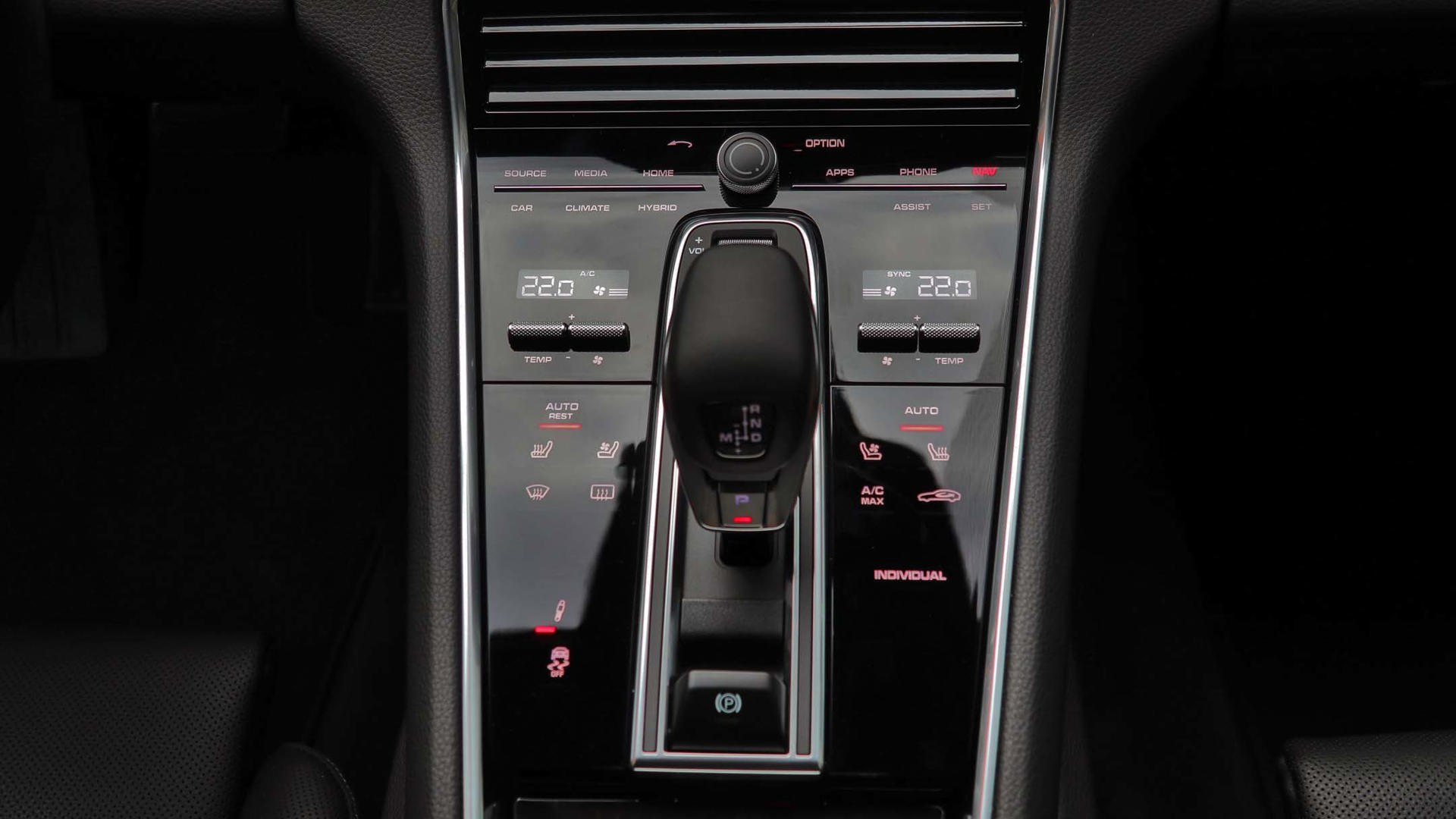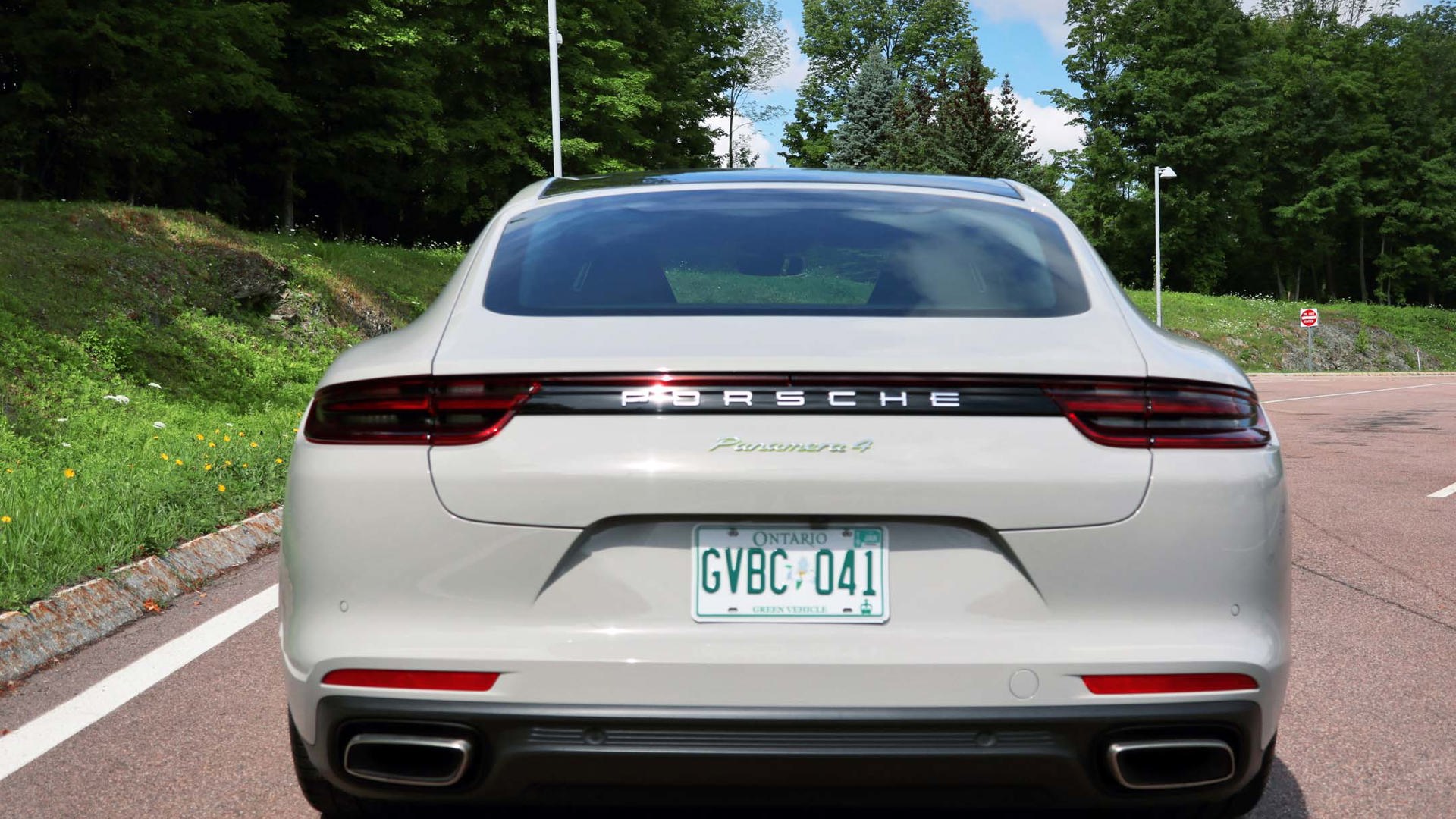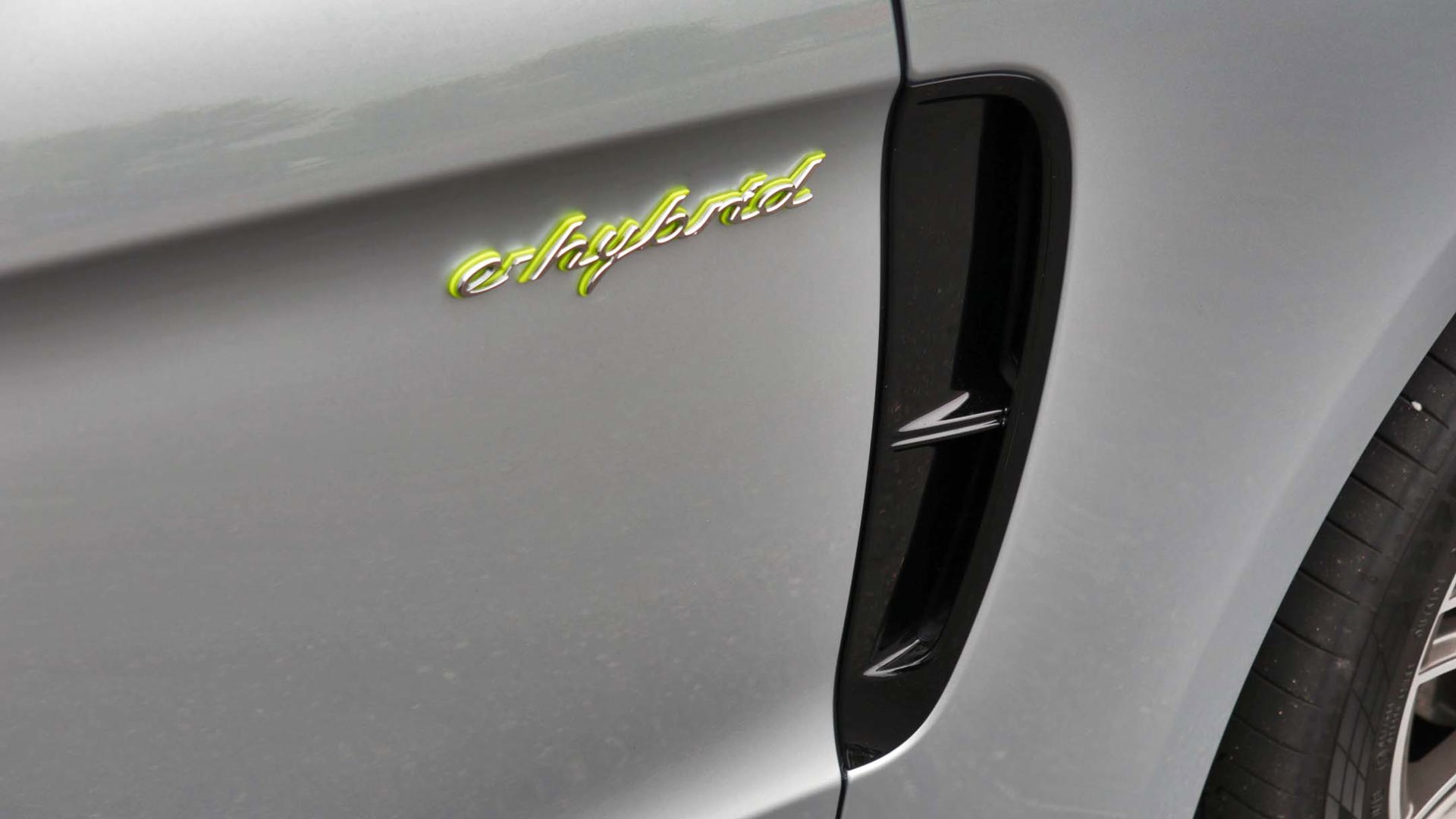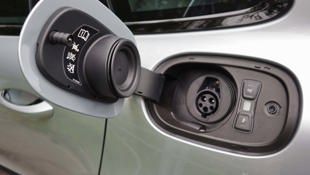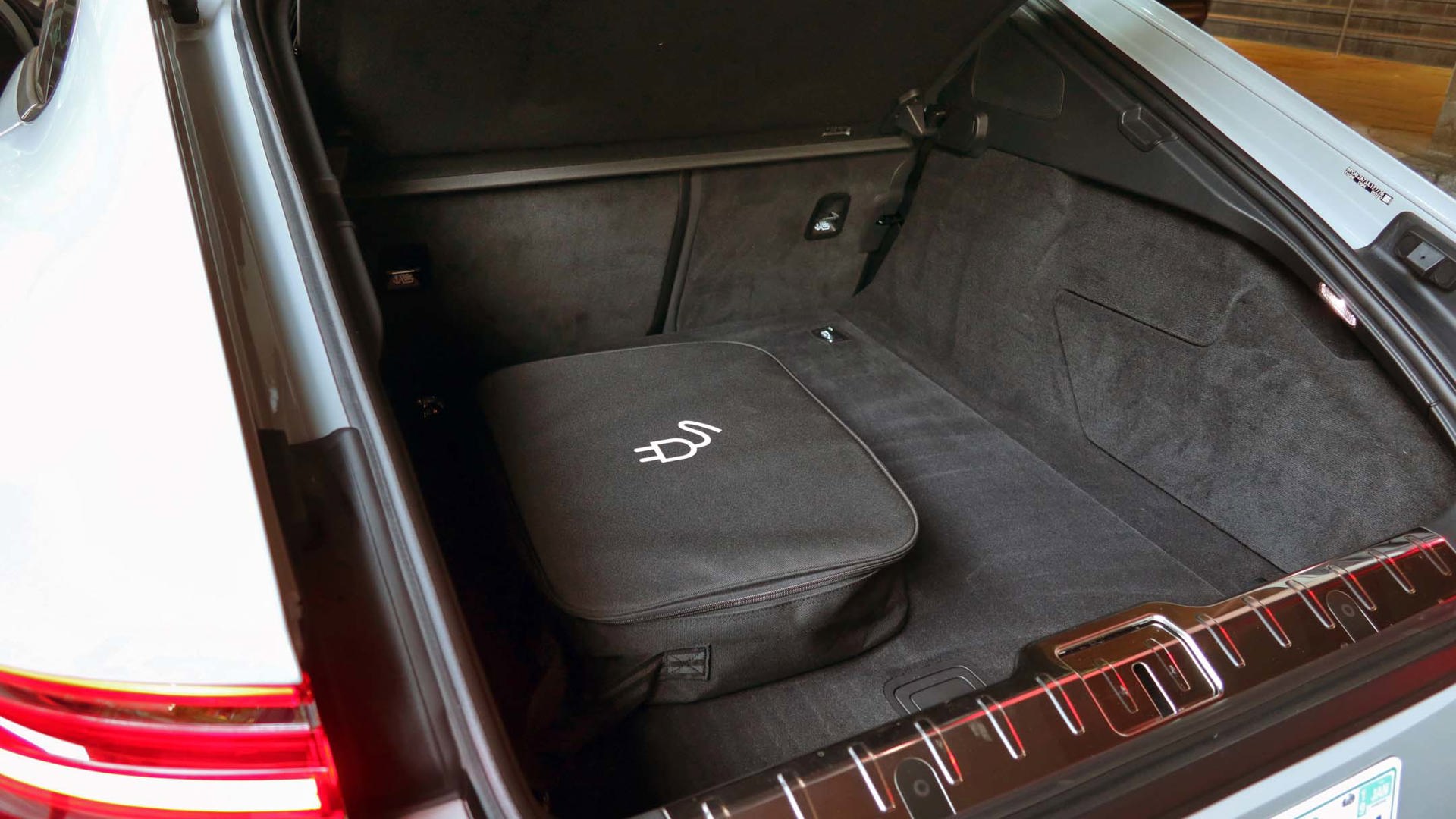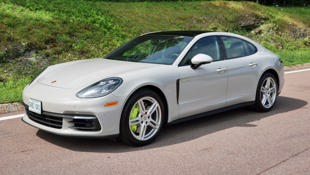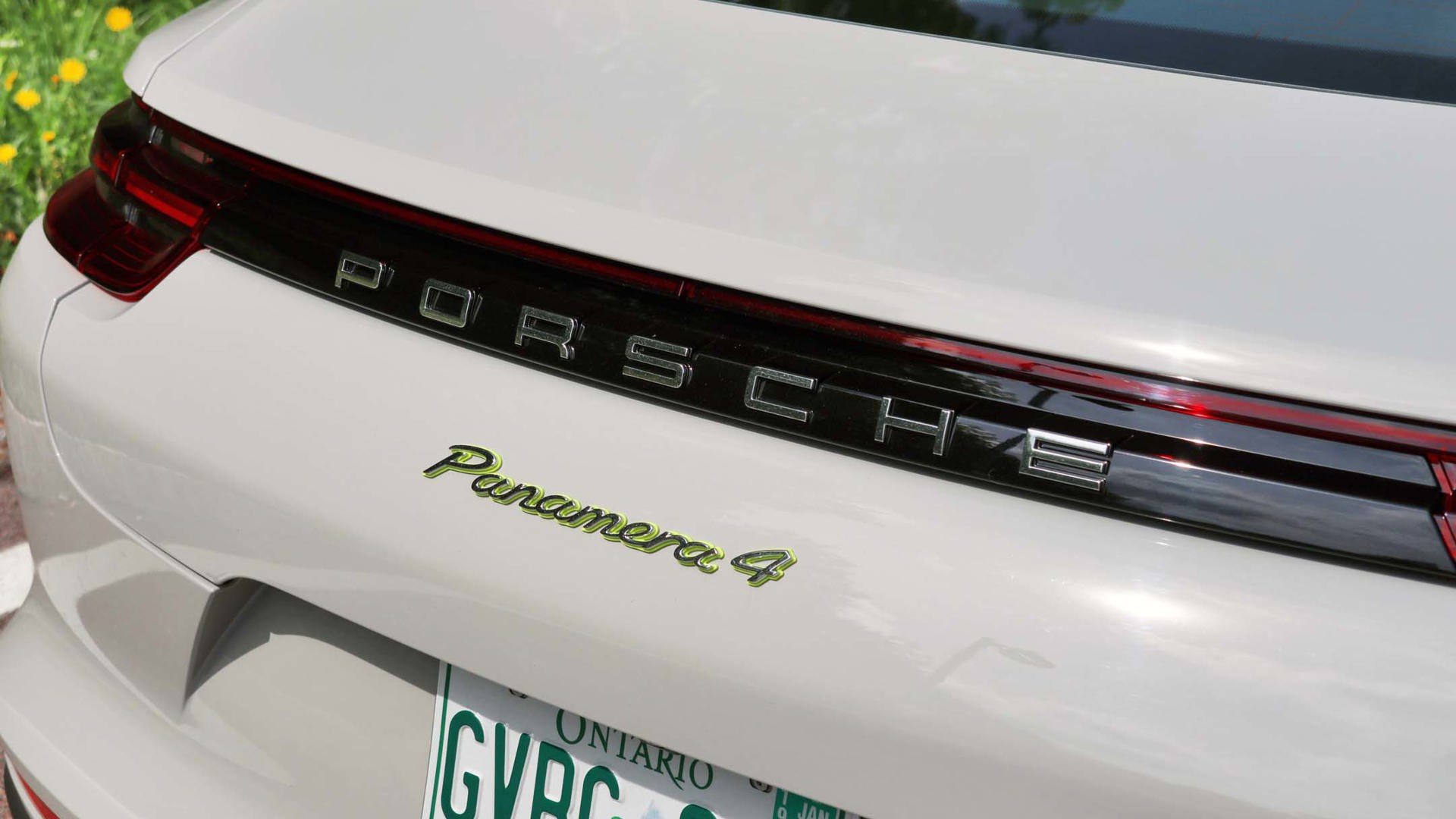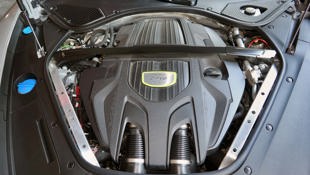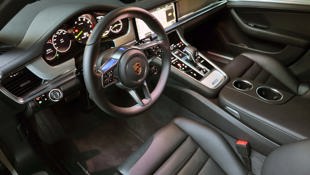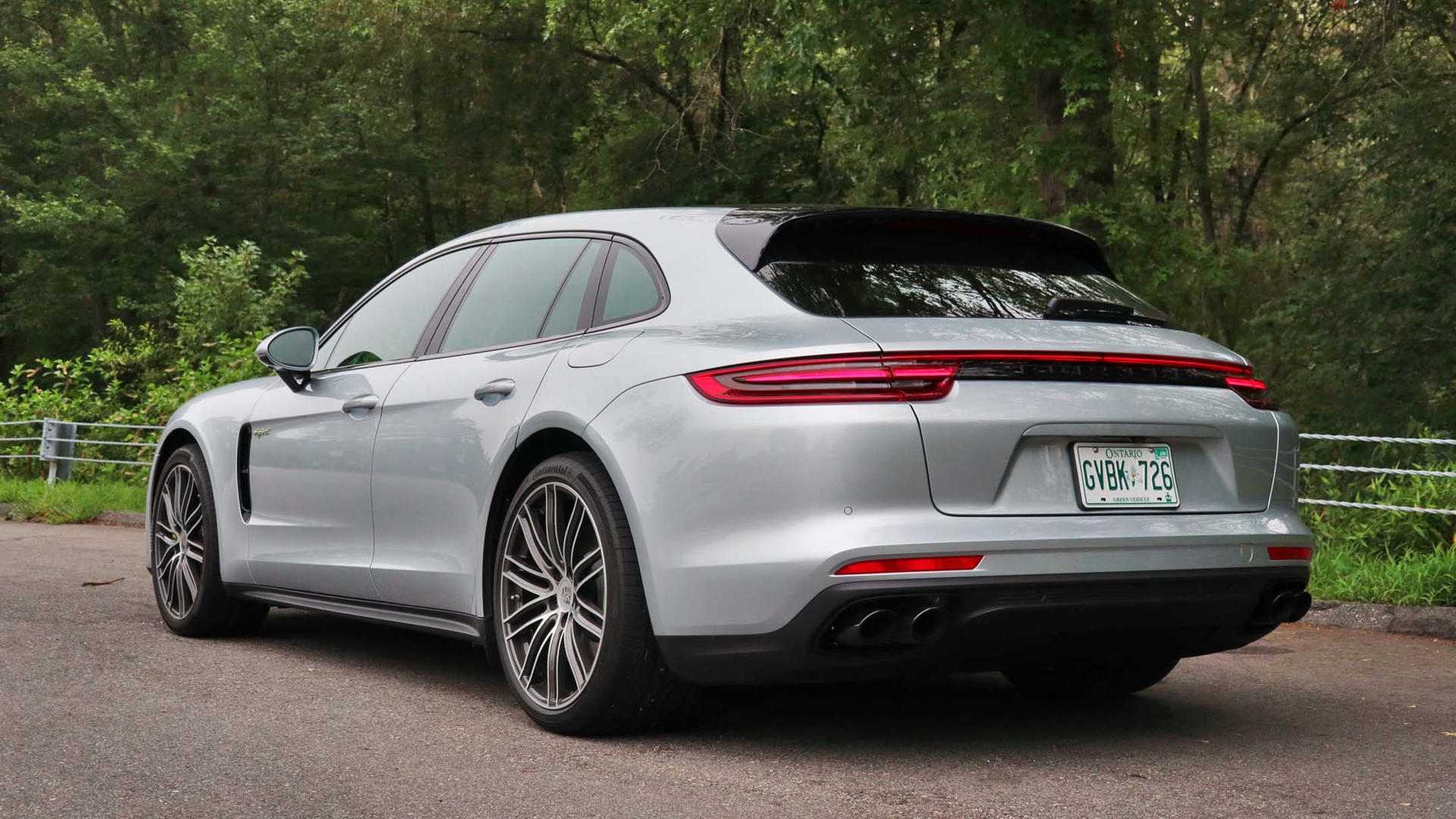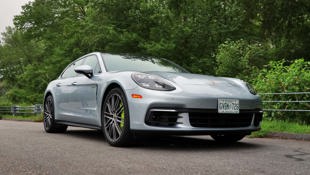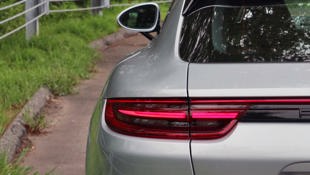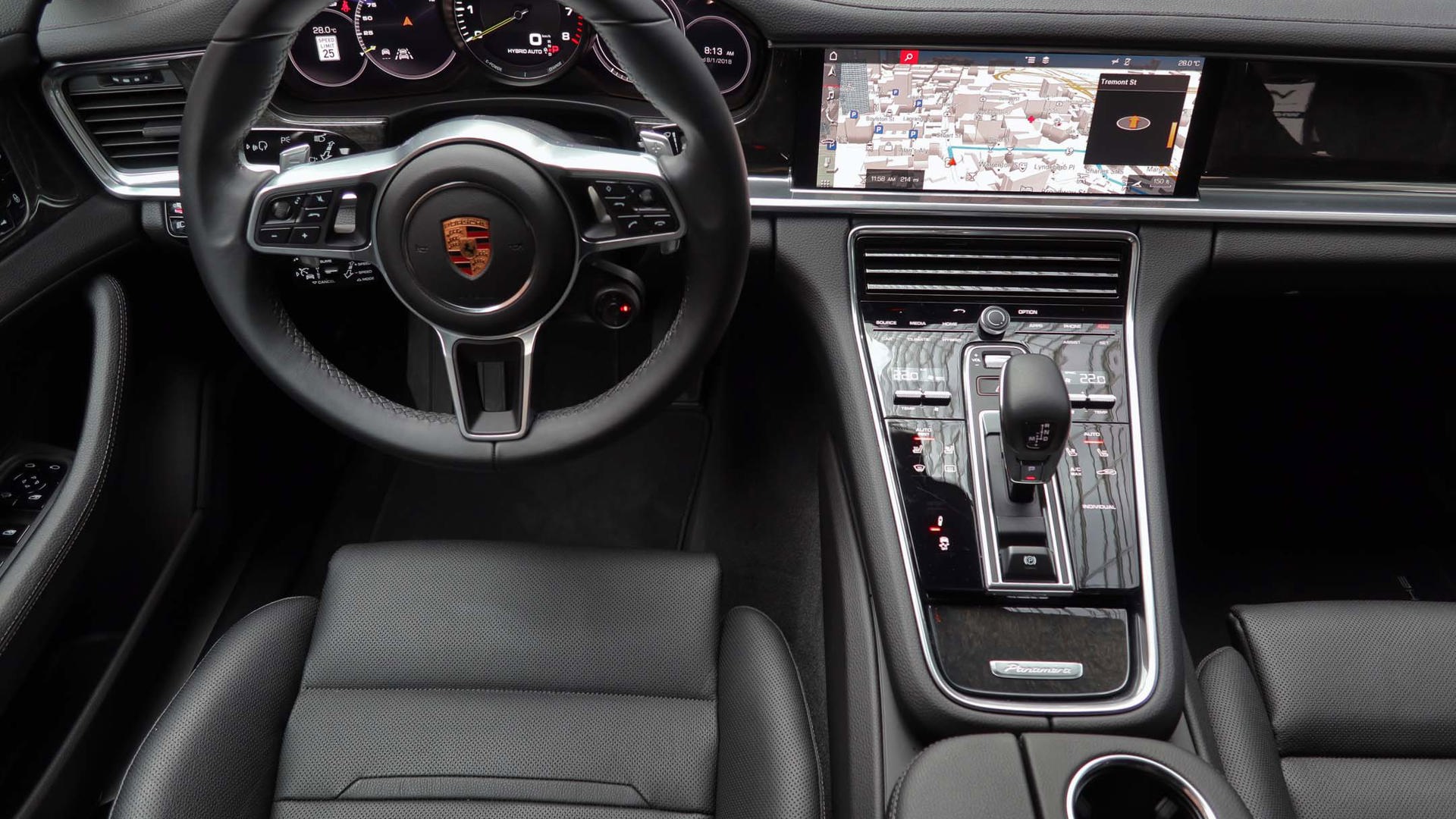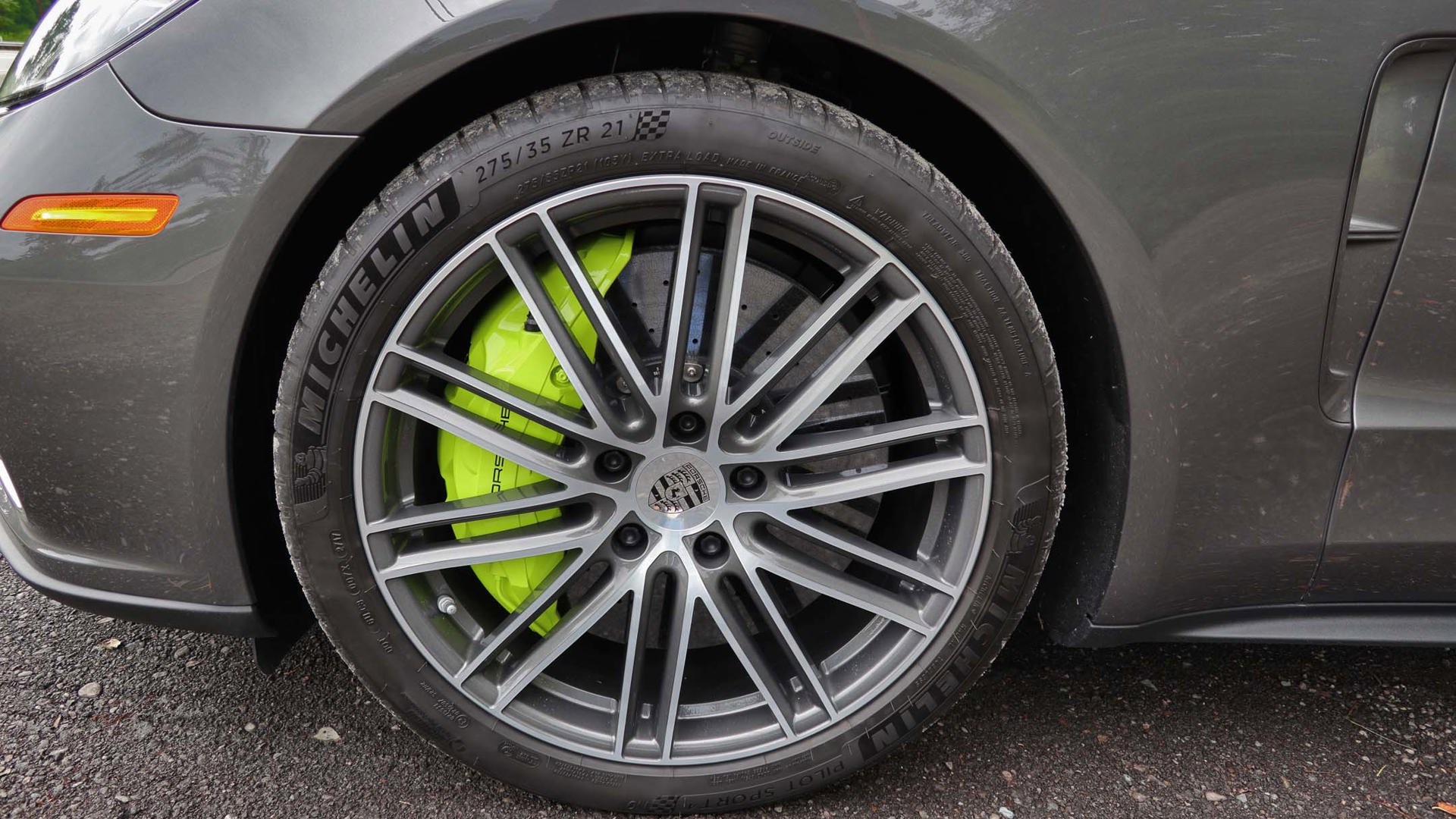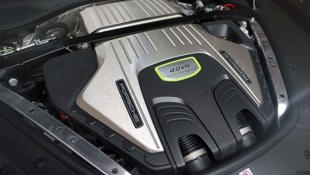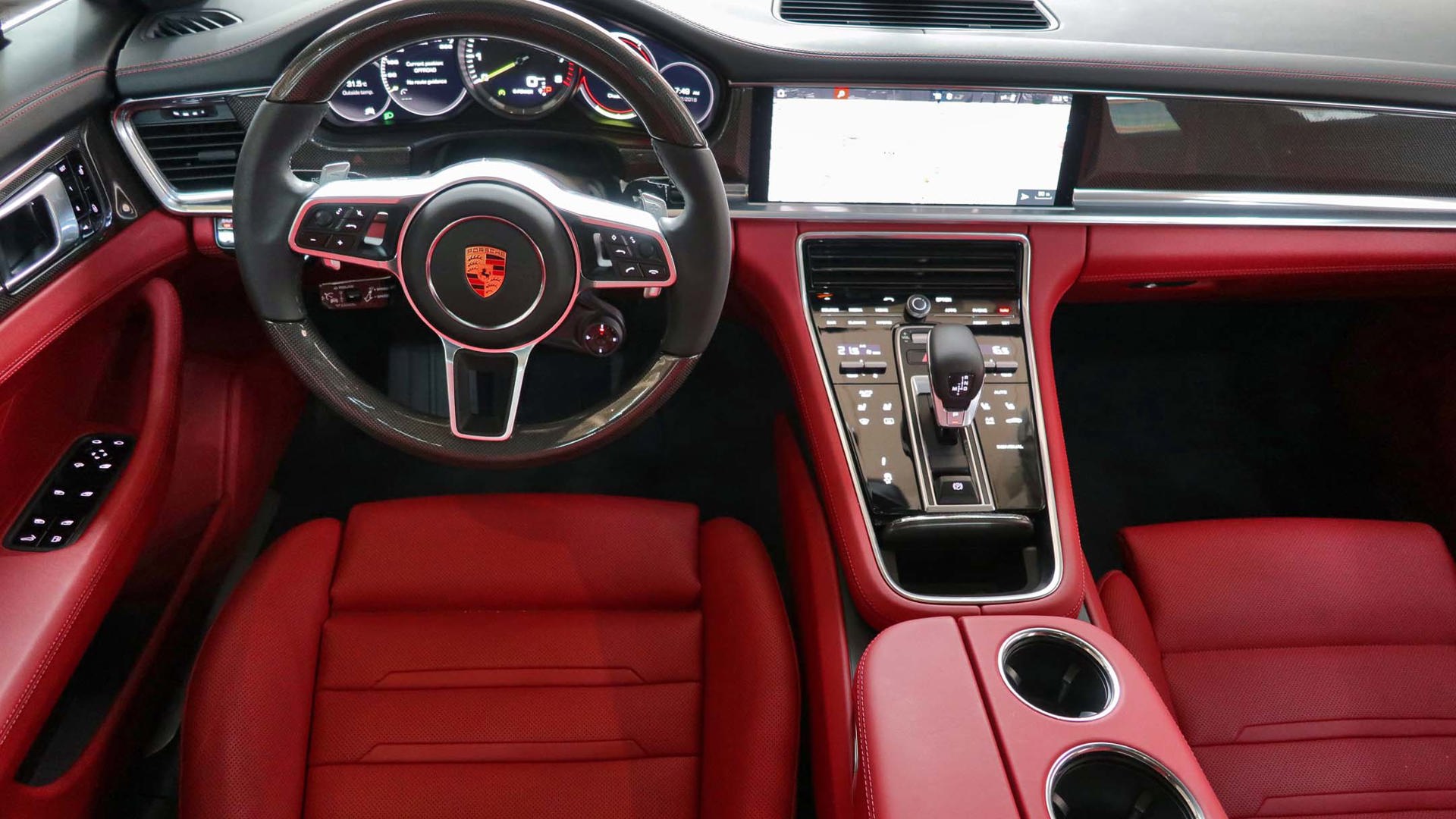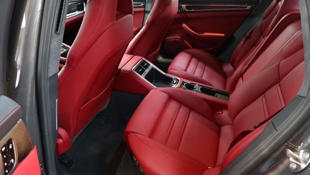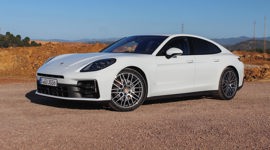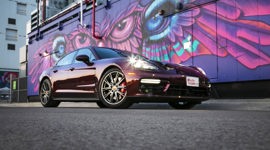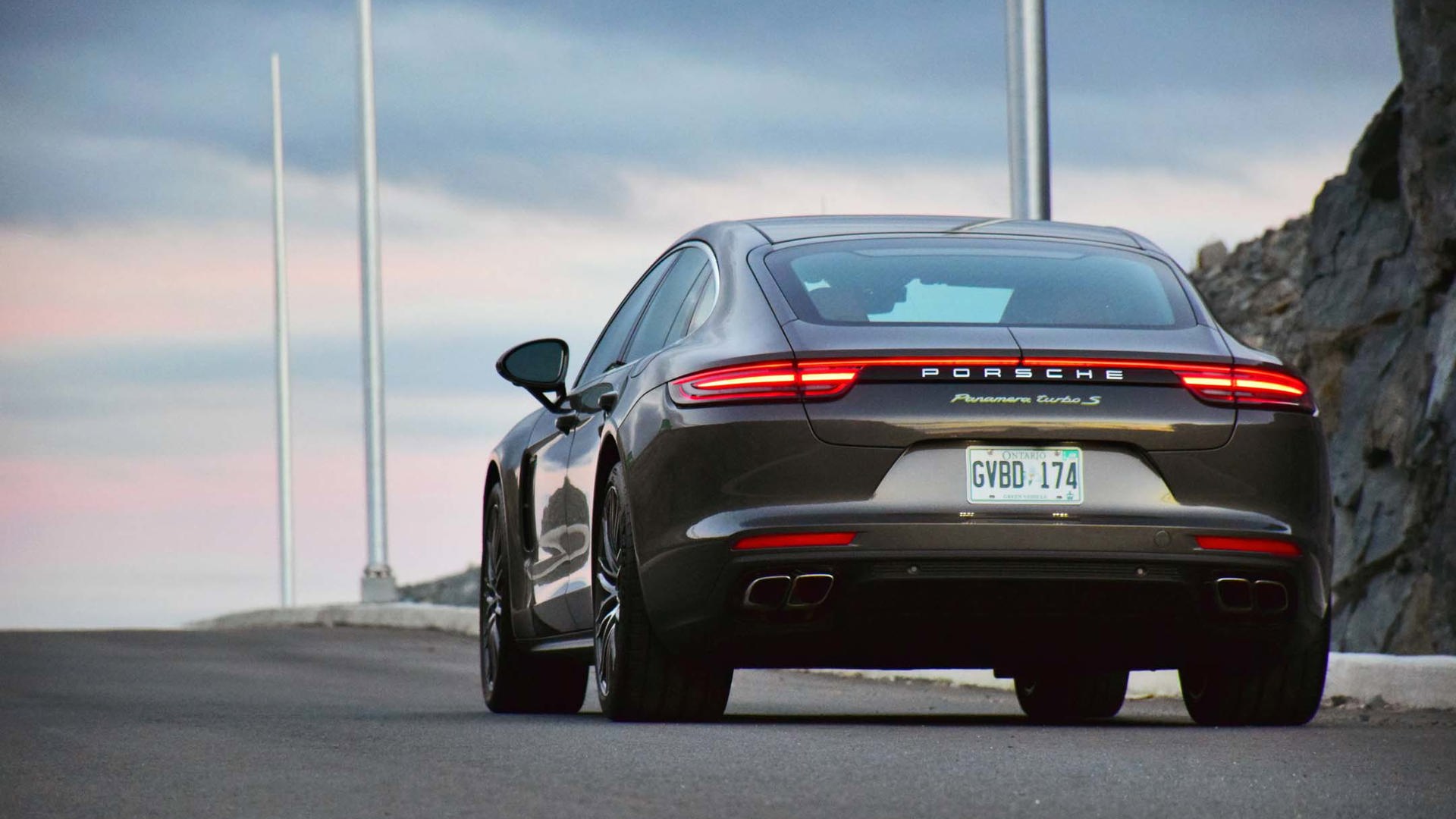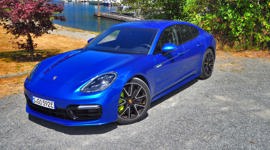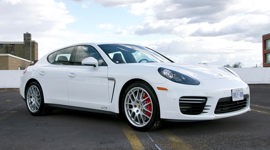What’s faster than a speeding bullet, more powerful than a locomotive, and is able to use “green” parking spaces and high-occupancy lanes? Porsche’s Panamera E-Hybrid series feels pretty damn close to the first two, and definitely qualifies for the third.
More battery equals more electric boost, which equals more fun.
That’s due to a second “fuel door” on the Panamera’s flank where you can plug it in: all gas-electric versions of this four-door are now plug-in hybrids (PHEVs). There’s a fuel-saving aspect to it, of course, but since this is Porsche, the bigger deal is that this extra battery capacity provides some very impressive extra performance.
There are two engine choices, each with three body variants available. The six-cylinder Panamera 4 E-Hybrid starts at $113,400, and also comes in the slightly-longer-bodied Executive or the new Sport Turismo body style, both at $118,600. The V8-powered Panamera Turbo S E-Hybrid starts at $209,800, and also comes as the Executive at $221,700, and Sport Turismo at $214,900.
Unlike prior hybrid generations when power went only to the rear wheels, all of these plug-in hybrids are all-wheel drive, and their electric motor is now more powerful.
On an event where I drove between stops in five states, I spent a day each in the 4 E-Hybrid, 4 E-Hybrid Sport Turismo, and Turbo S E-Hybrid.
A hybrid that puts performance first
First, the nuts and bolts. Like regular hybrid vehicles, a PHEV uses a gasoline engine and electric motor, automatically switching between them or running on a combination of the two, depending on driving requirements. When plugged in, the Panamera’s battery stores a charge for approximately 50 kilometres on electricity only. That doesn’t sound like much, but for many daily commutes it’s more than enough. Those who plug in faithfully might spend most of their everyday driving time on battery alone.
Most PHEVs use the stored charge right off the top, as soon as you unplug it and start driving. The Panamera will also, but you can override it and save the charge for later – for example, you can run on hybrid or gas-only on the highway, and then use electric power when you get to city streets.
Like other hybrids, the Panamera uses regenerative braking to capture kinetic energy and then store it as electricity. While many PHEVs need to be recharged by plugging in before you can run them exclusively on electric-only again, the Panamera can build right up to a full charge by using its engine like a generator, once you activate the car’s e-charge setting or put the drive-mode selector into Sport Plus.
The Sport Plus method recharges very quickly, but at a cost: as I watched my depleted battery build up to 50 percent, I also watched my fuel gauge drop by almost an eighth of a tank. But this part isn’t about planet-saving: more battery equals more electric boost, which equals more fun. Sport Plus continuously socks electricity away and then uses it generously to maximize performance when you’re hitting the throttle in that top-level driving mode.
The Panamera 4 E-Hybrid uses a 2.9L twin-turbo V6 that, on its own, pumps out 330 horsepower and 331 lb-ft of torque. Throw in the boost from the electric motor, and you’ve now got a combined 462 horses and 516 lb-ft.
The Turbo S E-Hybrid ups the ante with a 4.0L twin-turbo V8, sending out 550 horsepower and 567 lb-ft on its own, and ramping up to a juicy 680 horses and 626 lb-ft when the electric motor wedges in.
Both use an eight-speed dual-clutch PDK (Porsche Doppelkupplung) automatic transmission, which provides lightning-fast gear changes and satisfyingly blippy rev-matching. You can let the gearbox do the work, or you can shift it sequentially using the wheel-mounted paddles.
Sometimes silent, never sedate
I spent my first day in the “entry-level” of the group, the V6-powered Panamera 4 E-Hybrid. I’m guessing no one ever has an entry Porsche actually delivered to them, as each model’s option list is both extensive and expensive. This particular one had such items added as its $3,770 “Chalk” paint (which doesn’t look like much in photos, but is impressive in person); 20-inch turbo-style wheels at $2,050; adaptive cruise control at $3,290; and several others that brought it to $136,090 before freight and taxes.
The event wasn’t the usual twisty-road route the press is normally sent along when driving a sports car. Instead, we had a lot of ground to cover, and I was almost exclusively on interstate highways in all three cars. Not exactly enthusiast territory, but then, I’ve seen a lot more Panamera drivers in commuter traffic than I have on carve-the-canyon roads.
My car was fully charged – on 240 volts it takes between four to six hours, and can be programmed to charge off-peak – and it prowled the city streets from hotel to on-ramp on electricity alone. It remained on battery juice at highway speeds and then, when the stored charge ran out, automatically switched to hybrid operation.
The last-generation hybrid boosted the gas engine with electricity when you pressed the throttle at least 80 percent of the way down. It now kicks in right away, and because electric motors make their peak torque immediately, acceleration is immediate and powerful, yet still smooth and linear. Zero to 100 km/h officially happens in 4.6 seconds, despite tipping the scales at a substantial batteries-are-heavy-you-know 2,170 kilograms.
I switched the next morning to the E-Hybrid Sport Turismo, which is the same vehicle but with five-passenger capability (providing the middle person is thin and friendly with his seatmates) and unique rear styling that’s definitely polarizing. I like its looks from the rear, but from the front three-quarter, I’m not entirely sold on how the rear haunches line up with the rest of the profile.
Alas, my electric go-juice was missing. Our Philadelphia hotel had valet parking only and wouldn’t allow Porsche’s reps into the garage, and although the car jockeys promised they’d plug them in, something went sideways and our batteries weren’t charged overnight. It was disappointing, but it also illustrated a benefit. A fully electric car would have left me stranded in the City of Brotherly Love, but my Panamera obediently took me down the street on hybrid operation. As long as you have fuel in the tank, the car will run even if you never plug it in.
I couldn’t do a decisive apples-to-apples mileage check, but for what it’s worth, the fully charged 4 E-Hybrid’s trip computer showed an average of 7.6 L/100 km over the entire day’s drive. The Sport Turismo, which hadn’t given me that initial round of electric-only range, showed 9.0 L/100 km for the day.
The Sport Turismo was also heavily optioned (having the butt-mounted Porsche logo in black instead of chrome is $440!) to $150,270, including a $4,400 sport exhaust that made a glorious roar on hard acceleration. But it also gruffed up whenever the hybrid system switched from electric to gas under more sedate throttle, which made the otherwise seamless transition a little tiresome after a while.
“Sedate” was definitely not in my vocabulary on the third day, when I took the wheel of the eight-cylinder Turbo S E-Hybrid and its 600-plus horsepower-and-torque combo system (optioned to $230,440). My co-driver and I hit it hard several times, and he and I both shamelessly giggled like schoolchildren whenever we did, because the thing is just so damn much fun.
Porsche says zero to 100 km/h takes just three seconds, on its way to a top speed of 310 km/h. We’re taking the company’s word for it, because all our attention was on enjoying the push-into-your-seat experience while always stopping shy of lose-a-licence. That’s the problem with a car like this: unless you take it to the track, you can’t legally stretch its legs the way they’re meant to be.
But really, for many drivers, that’s a moot point. This is a Panamera with all the pleasures of that model – the luscious interior, the sportscar steering, the four-door practicality – with electric power that owners will prize for its techno bragging rights and the spectacular go-fast performance it provides. The “green car” benefits are there all right, but they’re really just the icing on these very well-baked cakes.
Pricing: 2018 Porsche Panamera E-Hybrid
Panamera 4 E-Hybrid: $113,400
Panamera 4 E-Hybrid Executive: $118,600
Panamera 4 E-Hybrid Sport Turismo: $118,600
Panamera Turbo S E-Hybrid: $209,800
Panamera Turbo S E-Hybrid Executive: $221,700
Panamera Turbo S E-Hybrid Sport Turismo: $214,900
